This FR is the second segment of a small trip to China to attend a wedding there. More information about it can be found in the FR of the first segment :
CDG - PVG : MU370 (A332) The tea-pots of Yixing
PVG - CGO : FM8389 (B738) The temples of Kaifeng You are here
CGO - PEK : CA1326 (B738) MiG Alley
PEK - TYN : high speed train
TYN - PVG : MU2402 (B738) Best wishes of happiness !
PVG – CDG : MU569, no report
This Fr starts on Shanghai Subway Line 2 which runs all the way from PVG to SHA. The Maglev runs faster, but there is only one departure every 15 minutes, and the end station is actually relatively far from the city center where connections are inconvenient, so that the gain in time is dubious, especially if you leave from a station on Line 2.
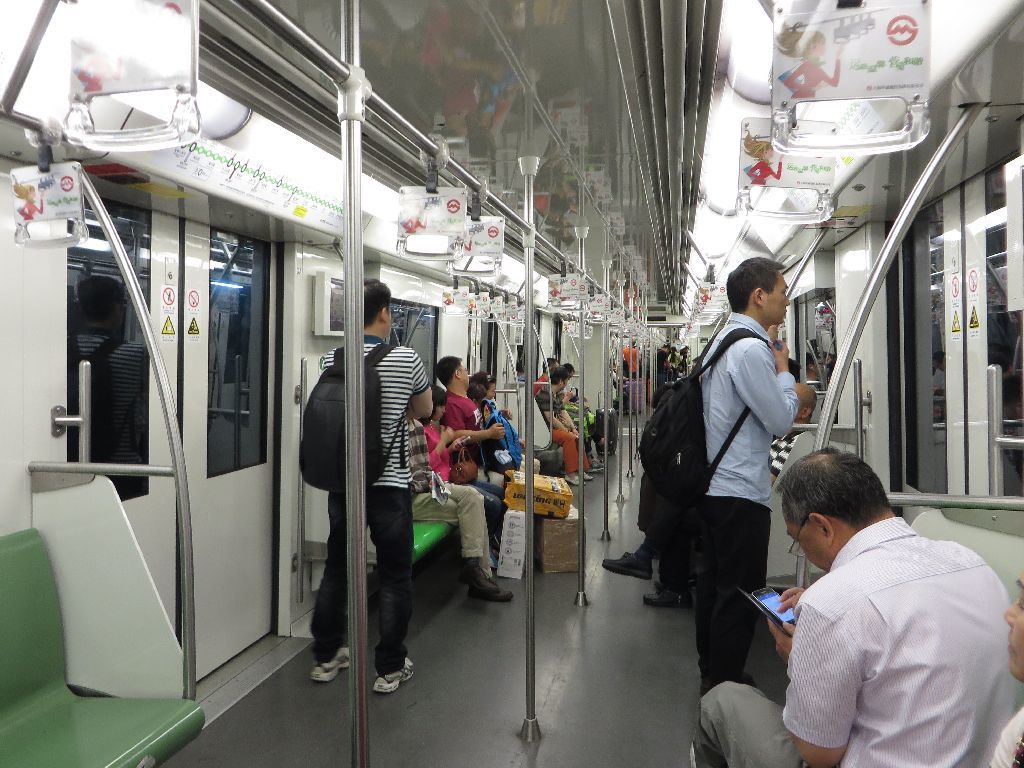
« You are here » : this slight translation error here always amused me (the meaning in Chinese is « Your localization », referring to the indication on the right, but it does not work right in English).
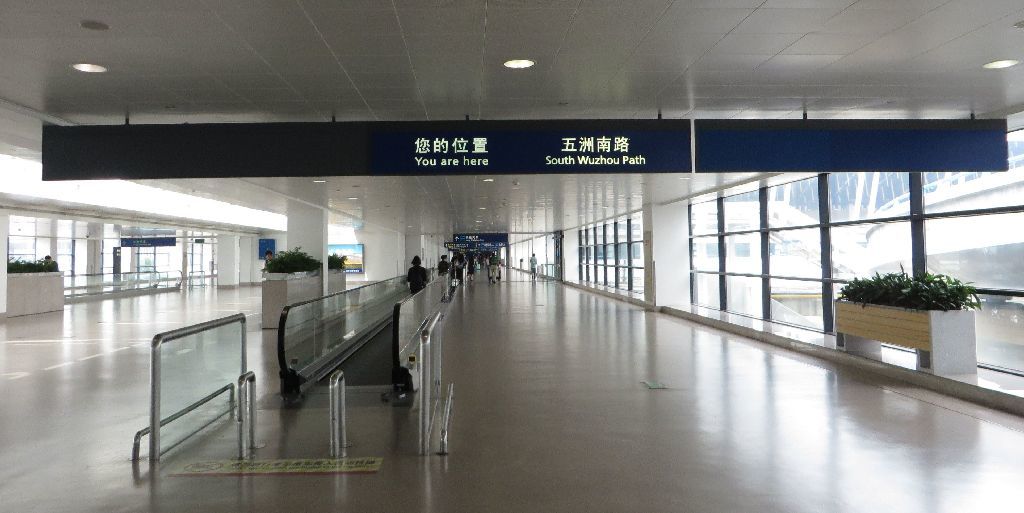
One peculiarity of Shanghai’s two airports is that there is an explosive detection test to enter the terminals (with a sort of cotton swab passed rapidly on the luggage), and the passengers are blocked in the sas that you see here the time (measured in seconds) they are analyzed by a machine.

The needle dotted roof of PVG’s Terminal 1

It takes no fewer than six screens to display all the domestic flights leaving from this terminal, and there is no duplication due to share-coding.
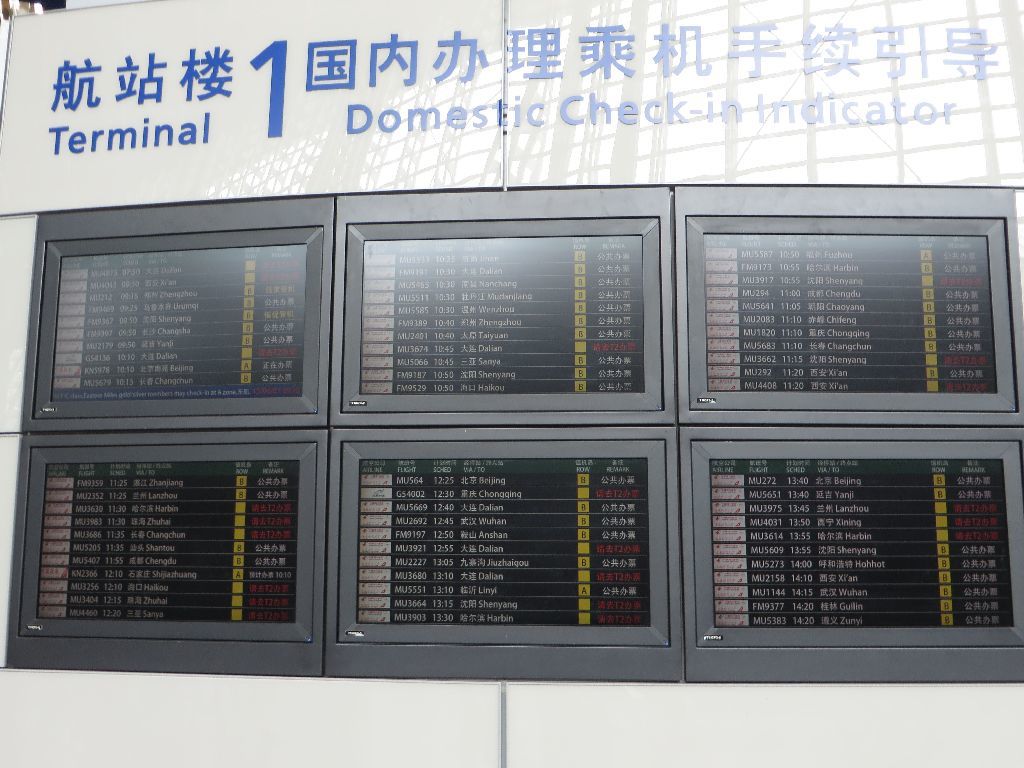
No worry about Flight MU9389 to Zhengzhou. Pure chance wanted that at exactly the same departure time, there was another flights sharecoded with AF for Taiyuan, which was our real destination in this trip.

There was no dedicated line for groups at check-in, and a group of in a Chinese airport can be a disaster, because they can be very inexperienced travelers, trying to bypass anybody else to stay with the others. See on the left the isolated passenger with her suitcase who is blocked by members of that group trying to shortcut under the barriers, and the airport staff restoring sanity in the process with commendable efficiency. There was a lot of loud shouting, though.
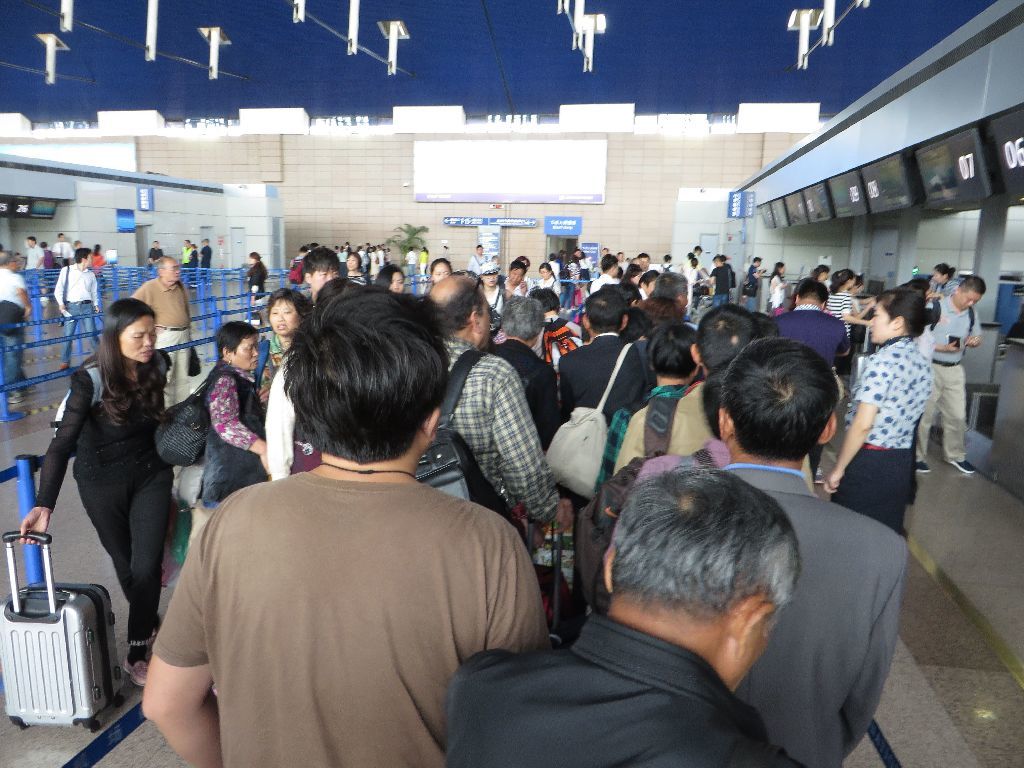
Thanks to this airport staff who maintained order, the line made quick and orderly progress : in a matter of five minutes, we were done with.
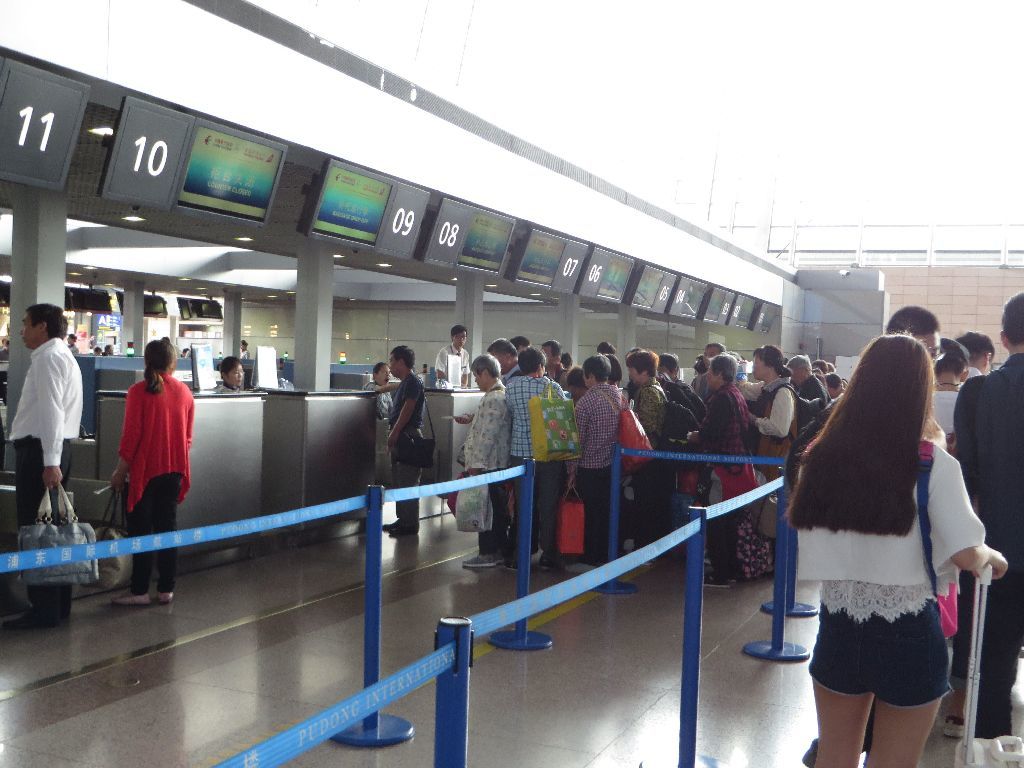
And we only needed to reach the security checking, following these FAs.

The BP before it was smeared with blue ink at the counter where it was checked as always in China just before the security check.

I had limited time for some plane spotting while remaining in sight of the boarding gate, and first and foremost of Mrs Marathon who remembers her experience of being “abandoned” by me in a much more remote Chinese airport (see the story here
The good news for plane spotters in PVG is that the windows are very inclined, which reduces the risk of them being stained by the rain. The bad news is that it is difficult to get close, which makes it difficult to take pictures of the planes parked at the gates.
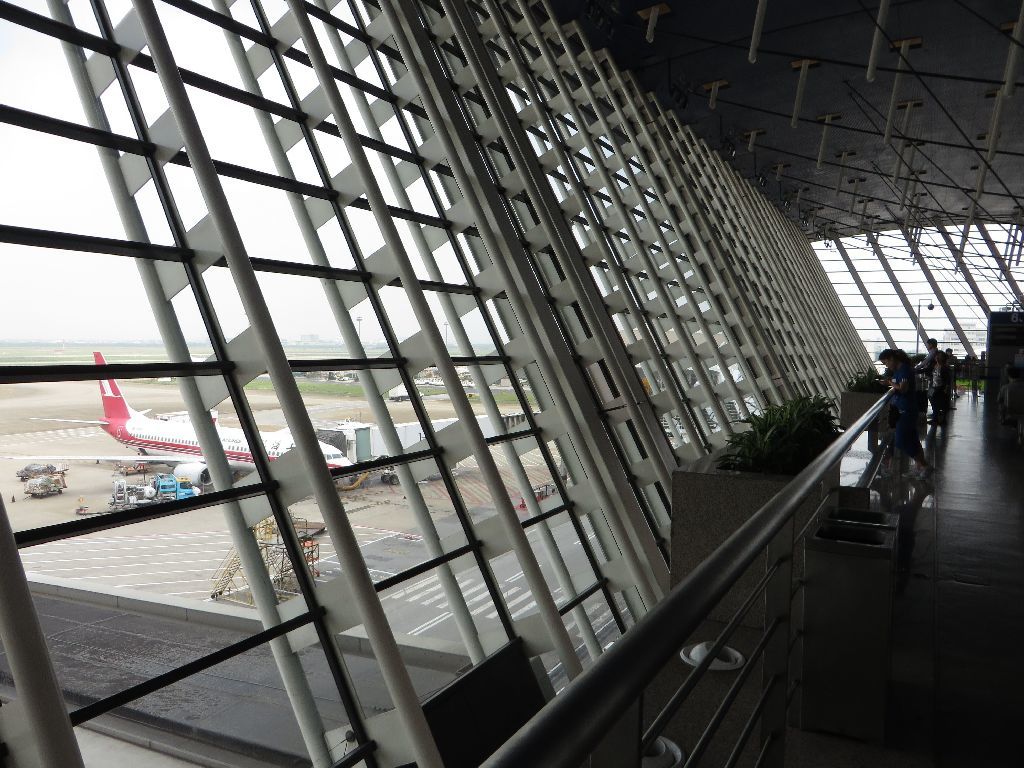
This was the best picture I could take of the plane that we were going to board:
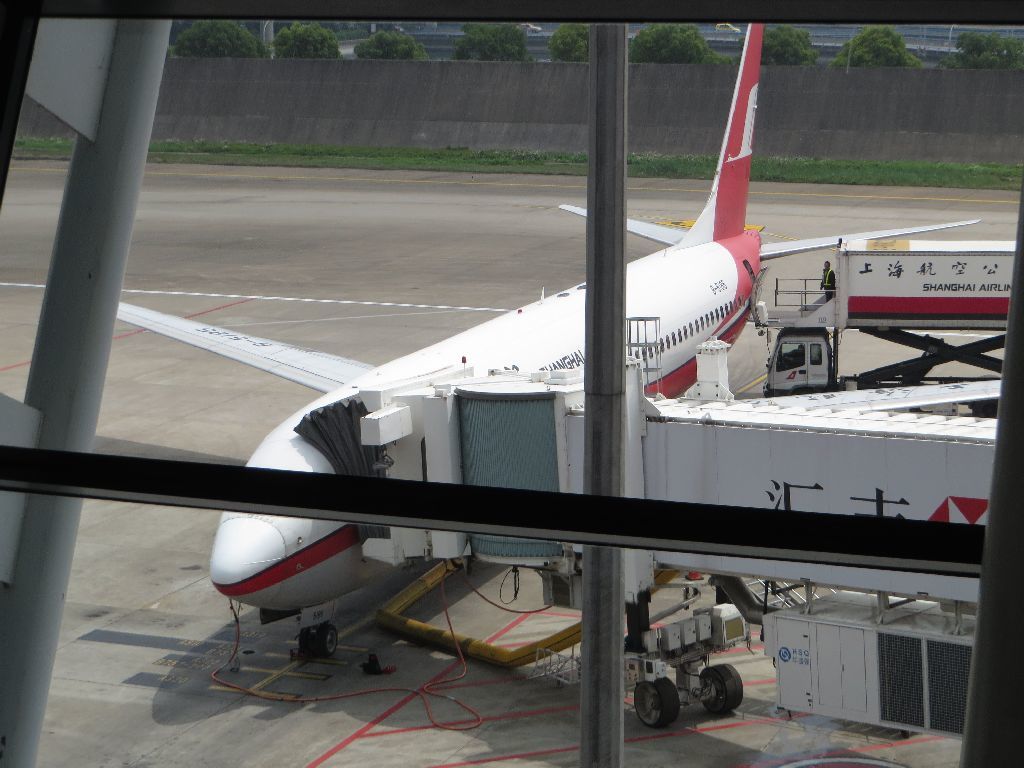
The plane’s number, in case you are interested
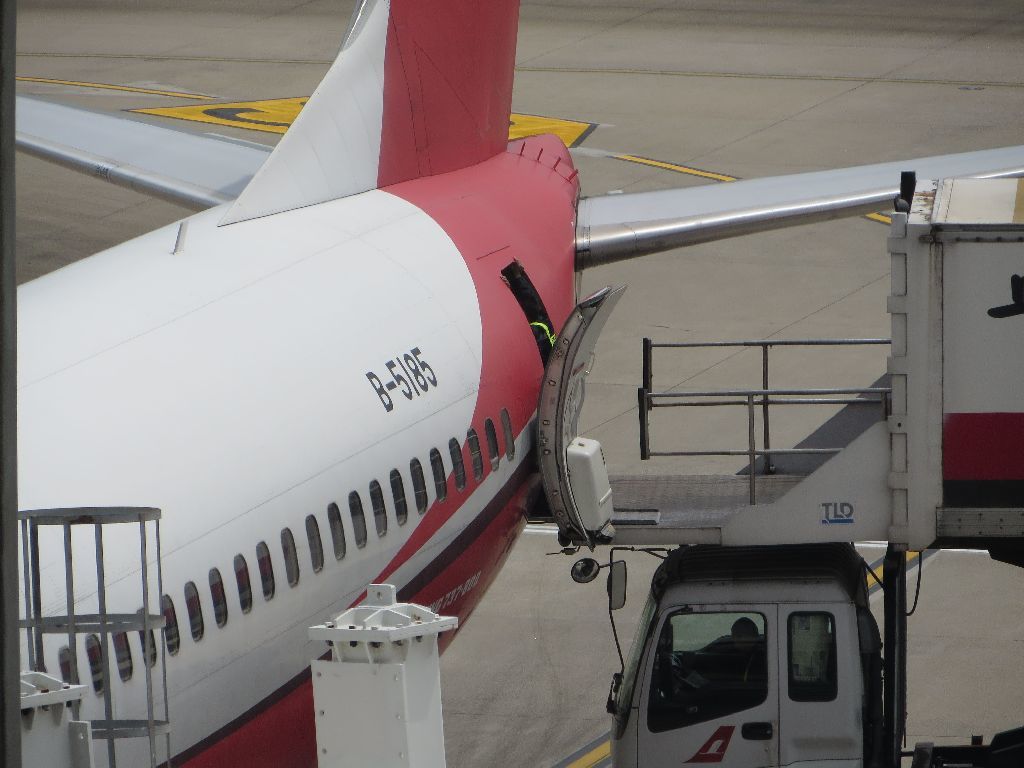
Departure of a Swiss A340
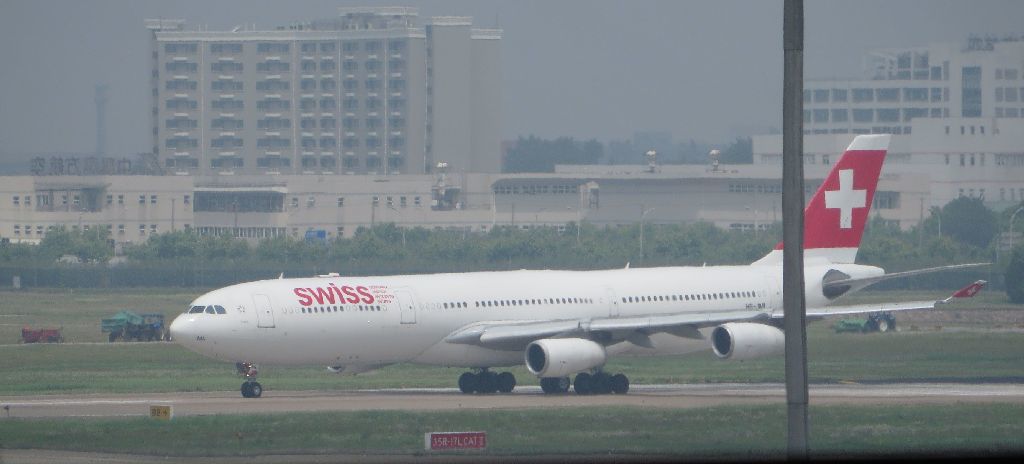
Arrival of a Hainan Airlines 738.
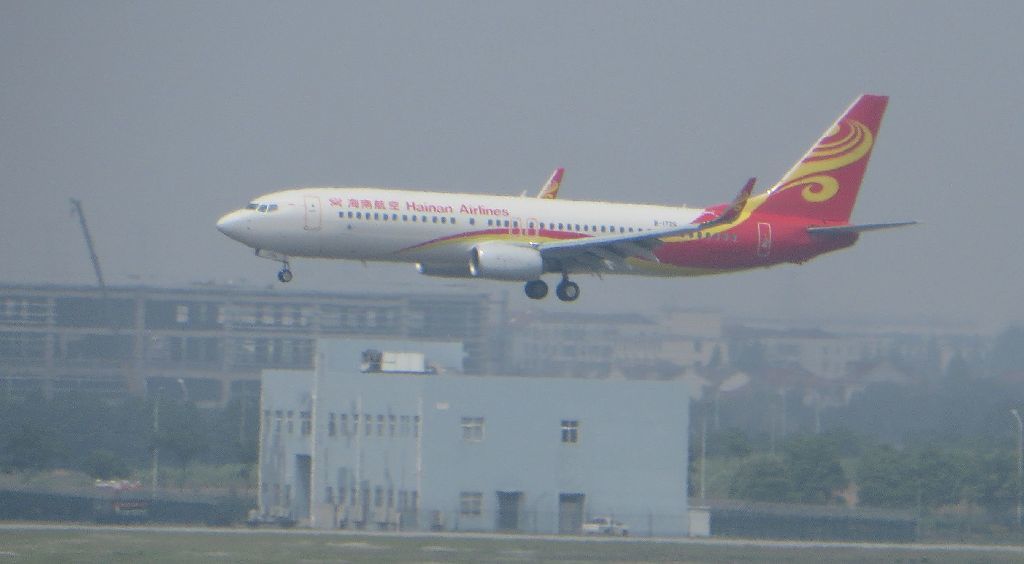
It took me some time to identify this tiny airline that I did not know : Fuzhou Airlines, named after the capital of Fujian Province.
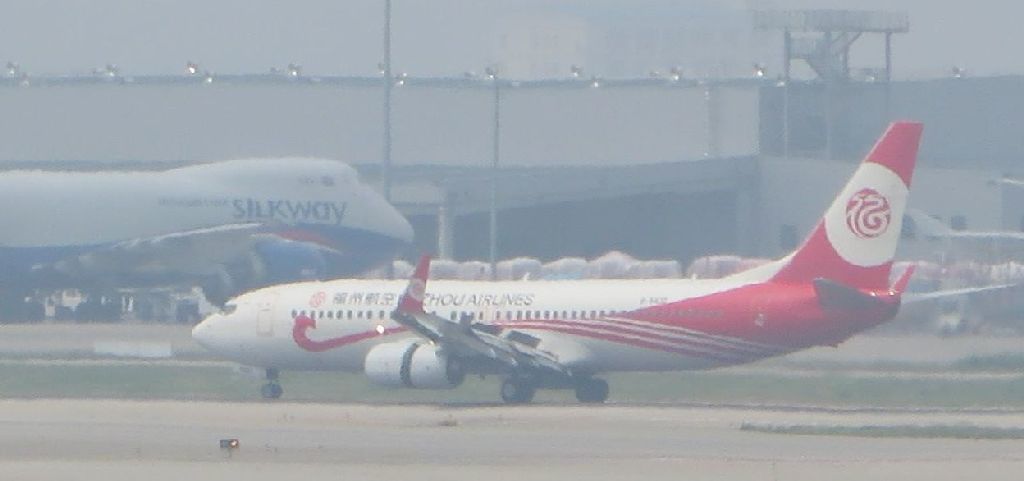
Shanghai (PVG and SHA) being MU’s main hub, there was no lack of aircraft of that airline.

A320 (with winglets and the old livery) and A321 (with sharklets in Skyteam livery)
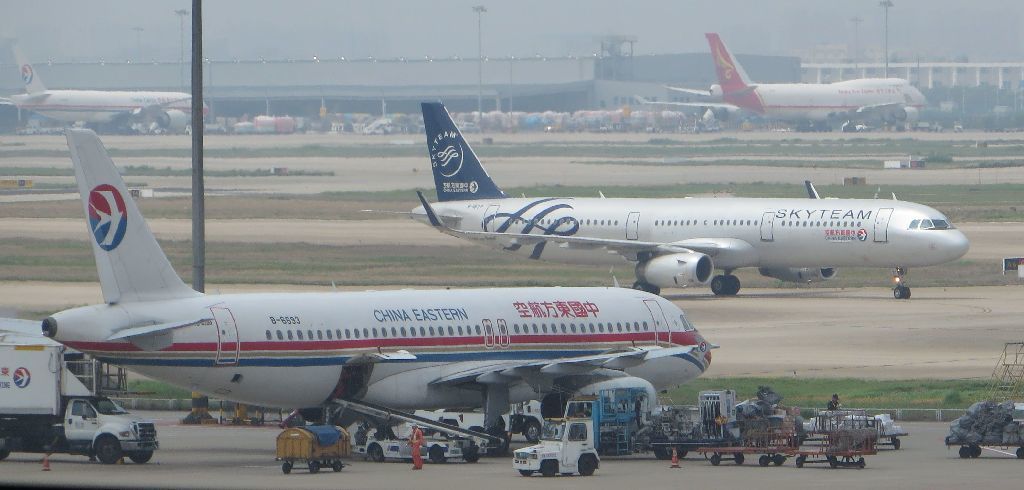
Boarding was strictly on time
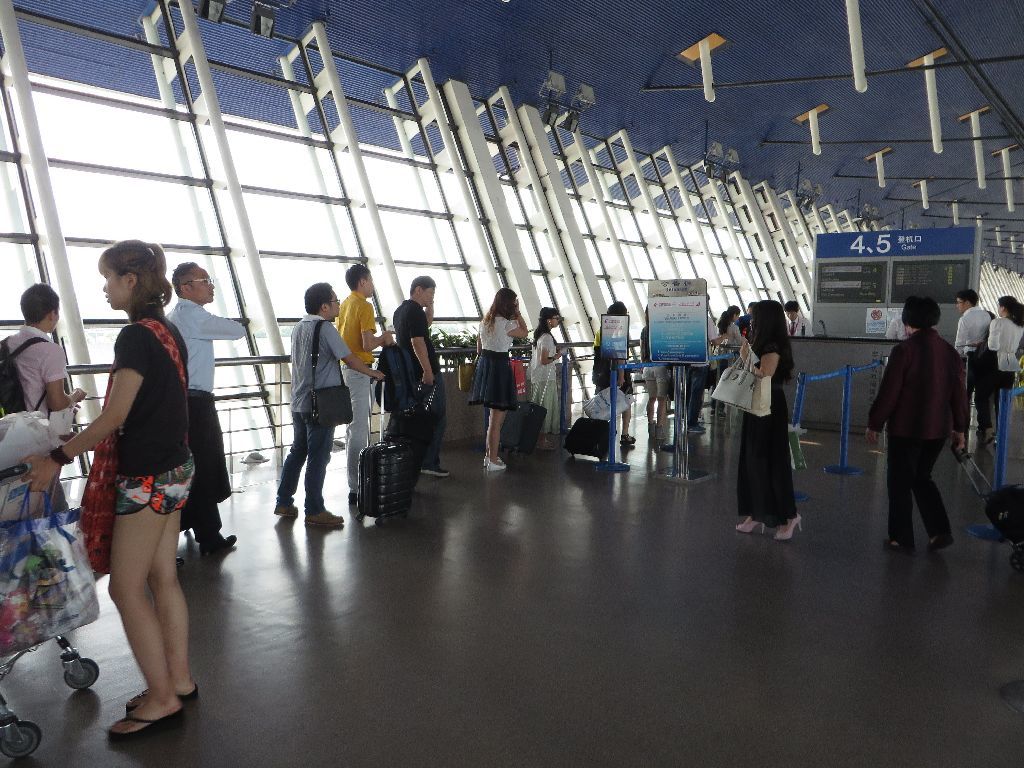
There too, the jetbridge was branded 汇丰 and HSBC
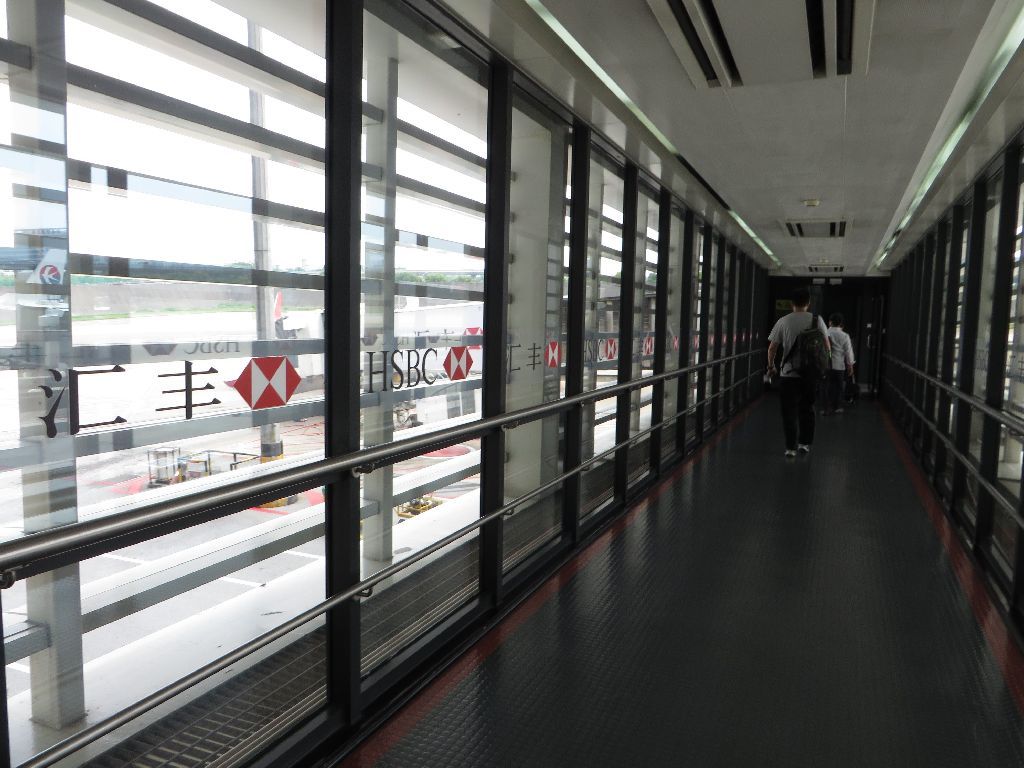
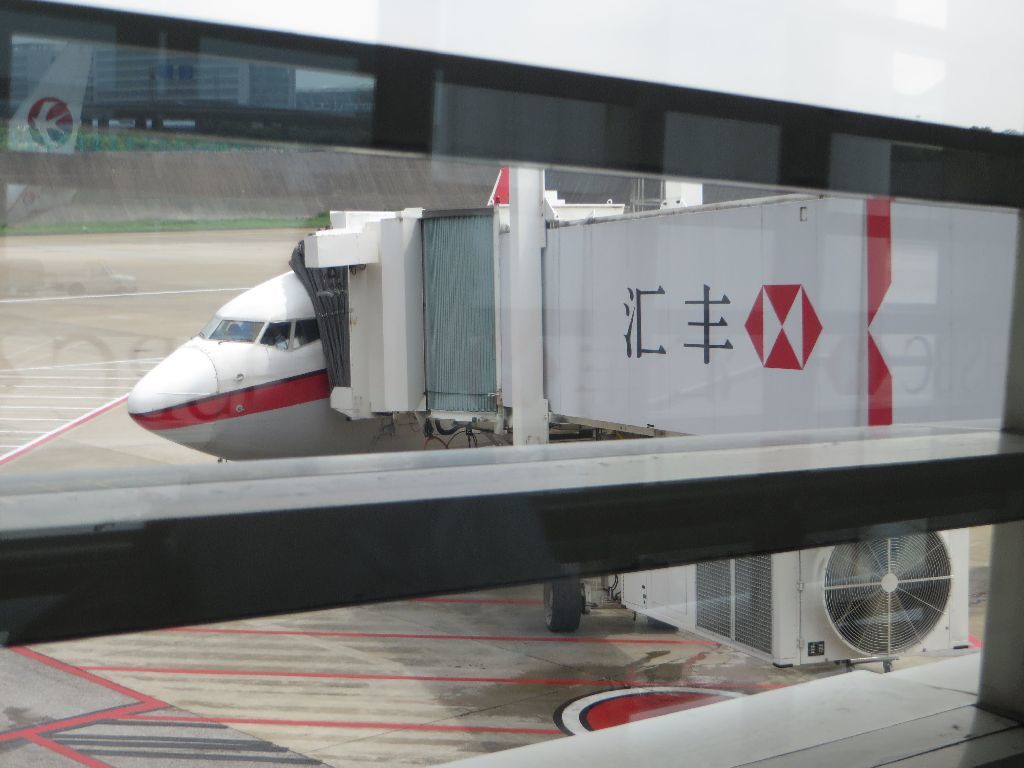
I could not capture the whole 上海航空 name through the jet bridge’s window
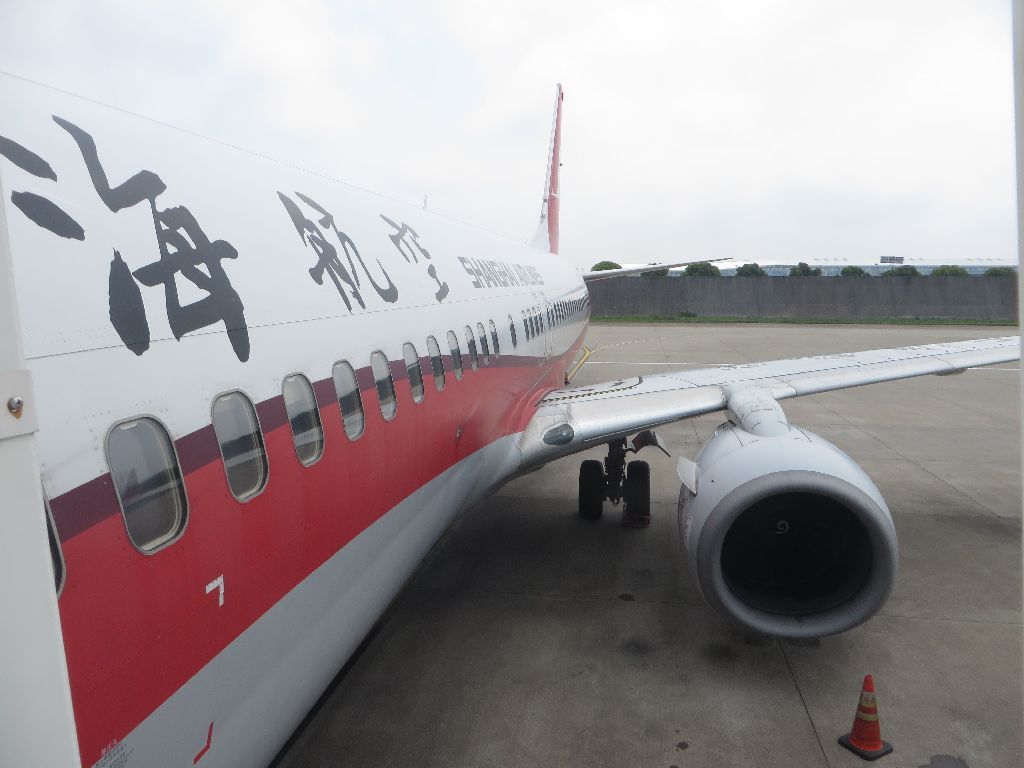
Going through the two rows of the J cabin in 2+2 layout
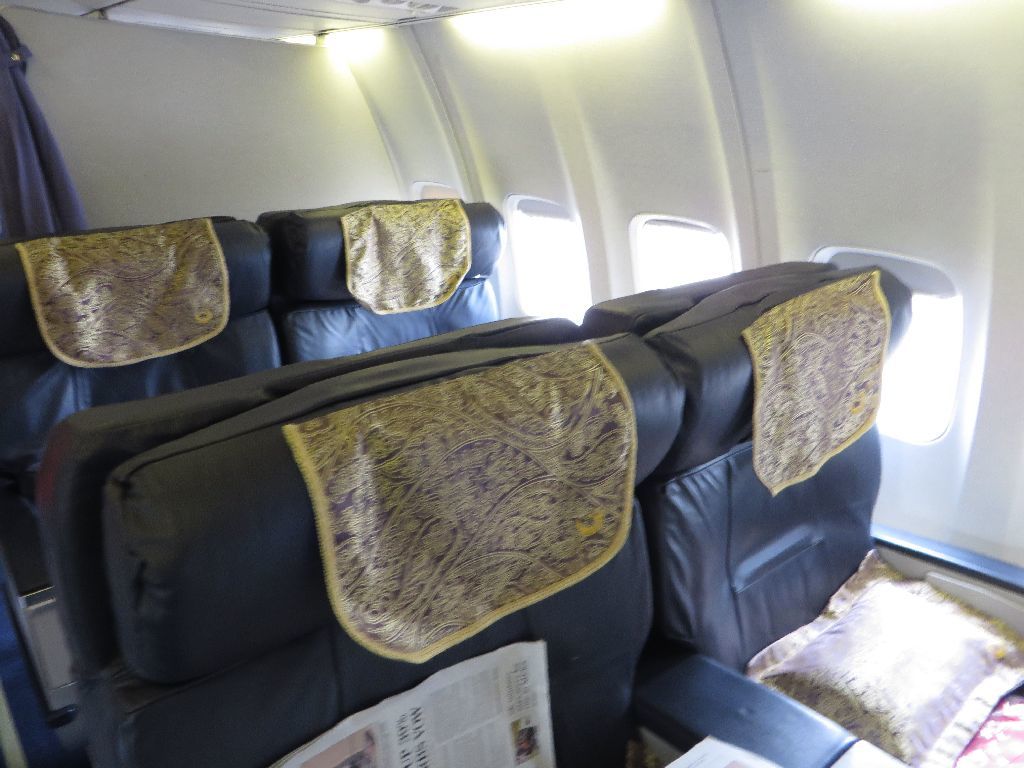
And arrival in the Y cabin, here before the rows around us would fill up.

The antimacassar has advertising
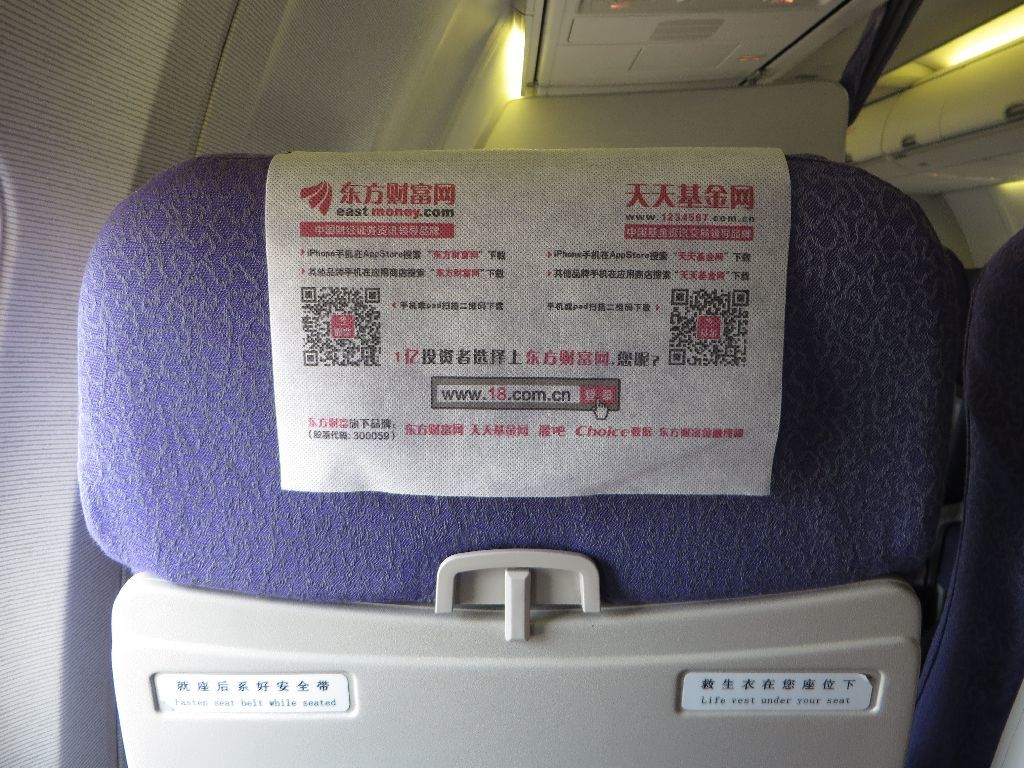
Standard and therefore decent seat pitch, approximately 27 cm from the seat’s limit to the seat pocket before me

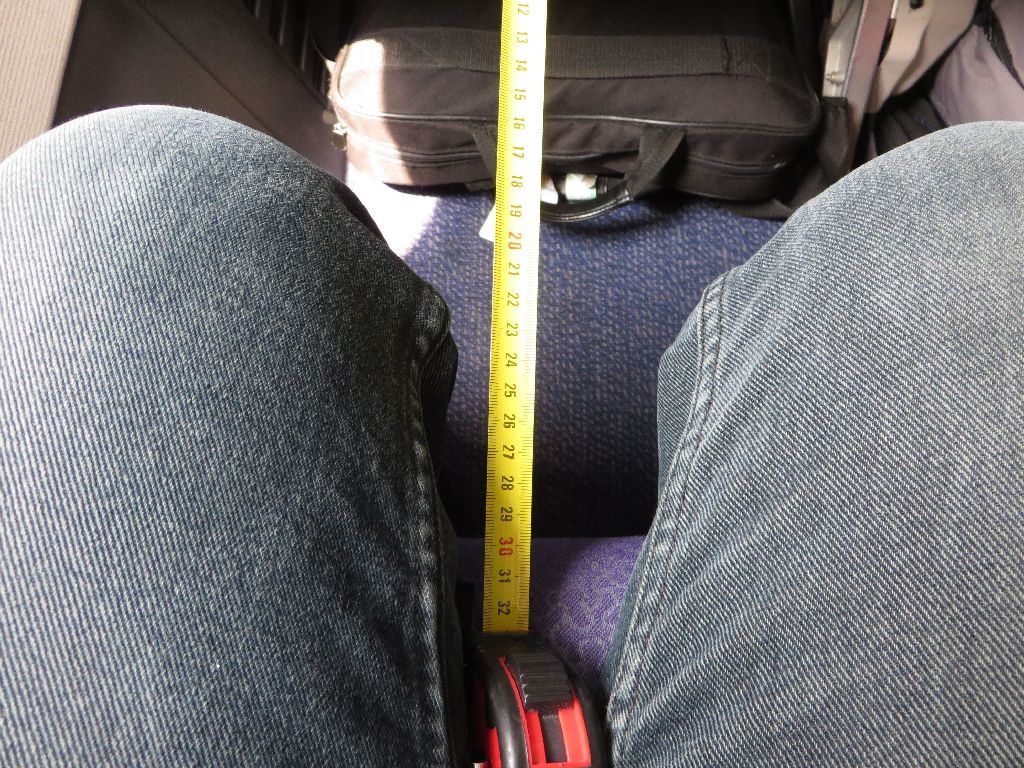
A detail of the carpeting. It was clean, in a location where small debris tend to accumulate.
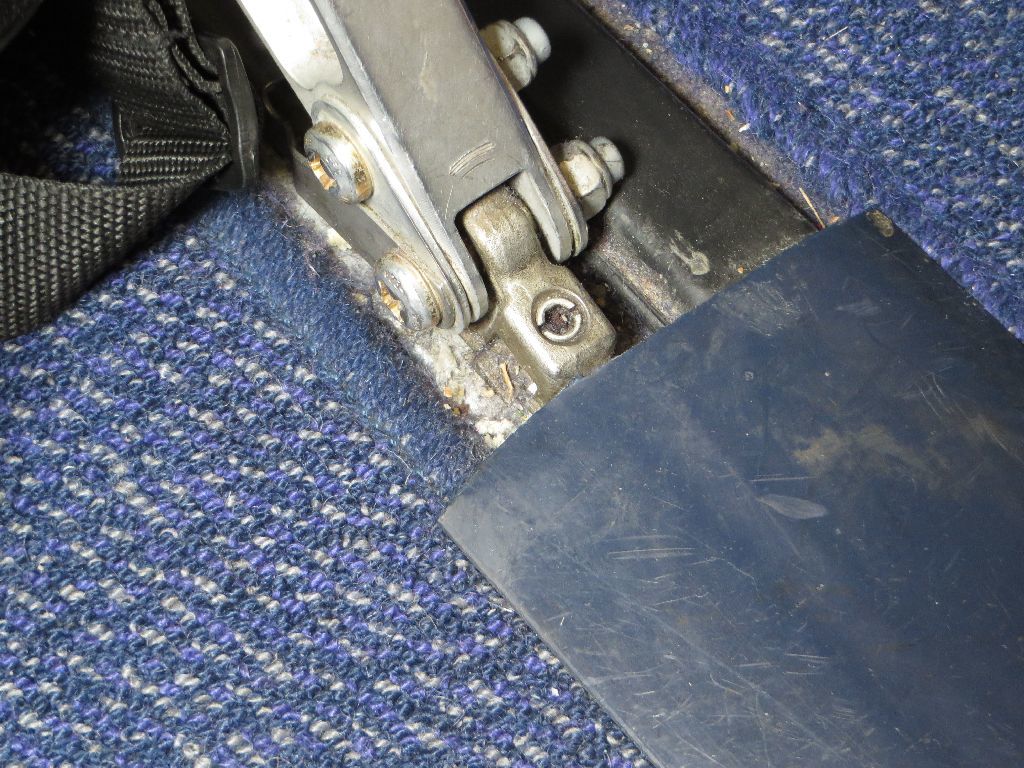
These two buildings are a motel and a rather expensive hotel located between PVG’s terminal. Each time I checked, the motel was booked full.
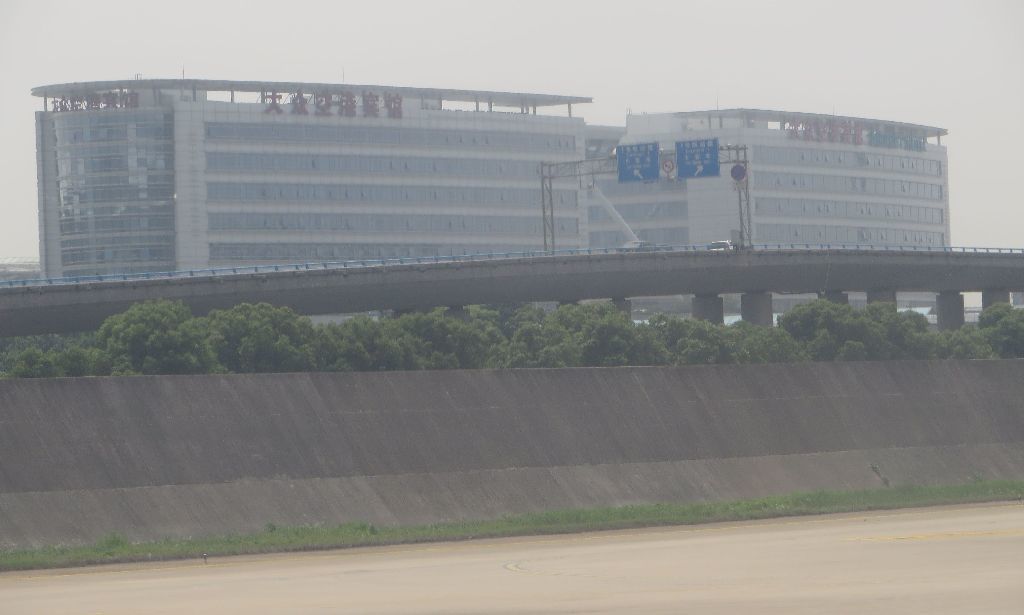
The FM and MU aircraft for the next domestic flights
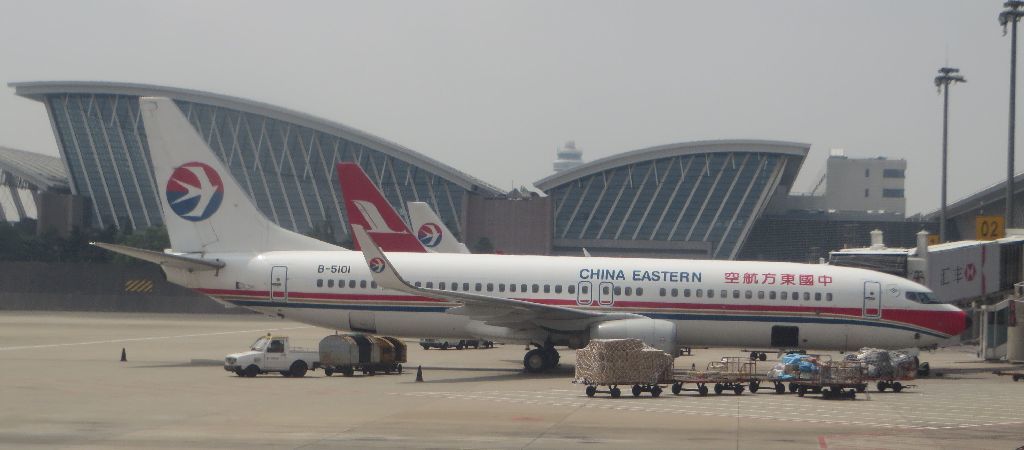
The safey card, both sides
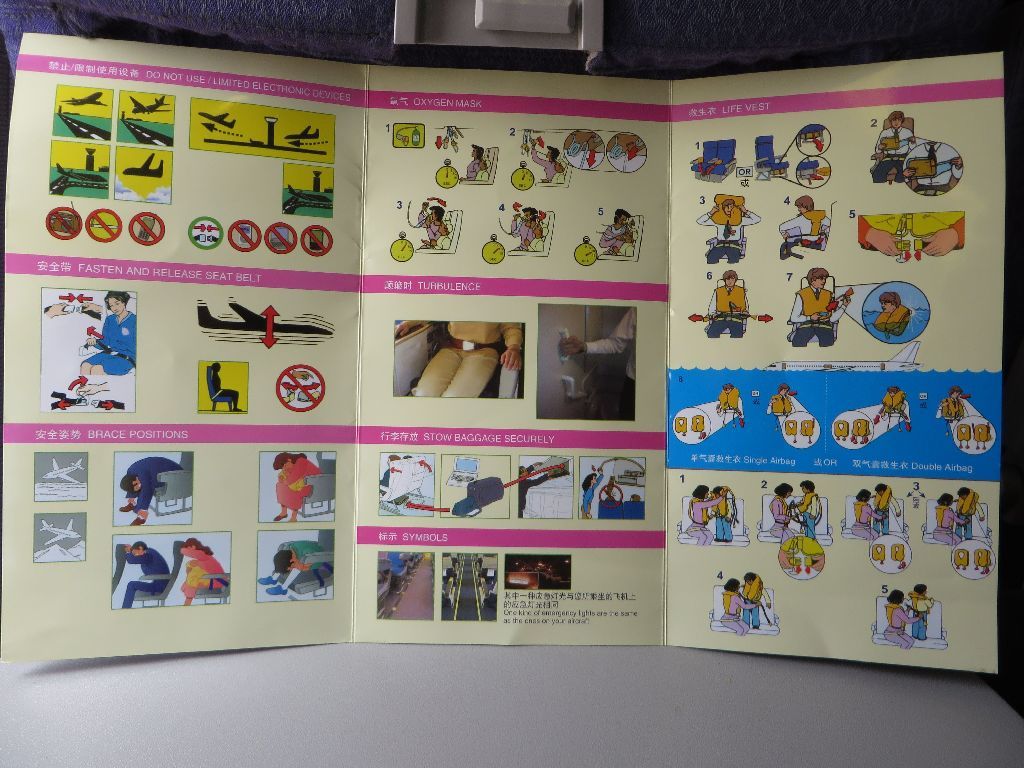

A very classical overhead panel
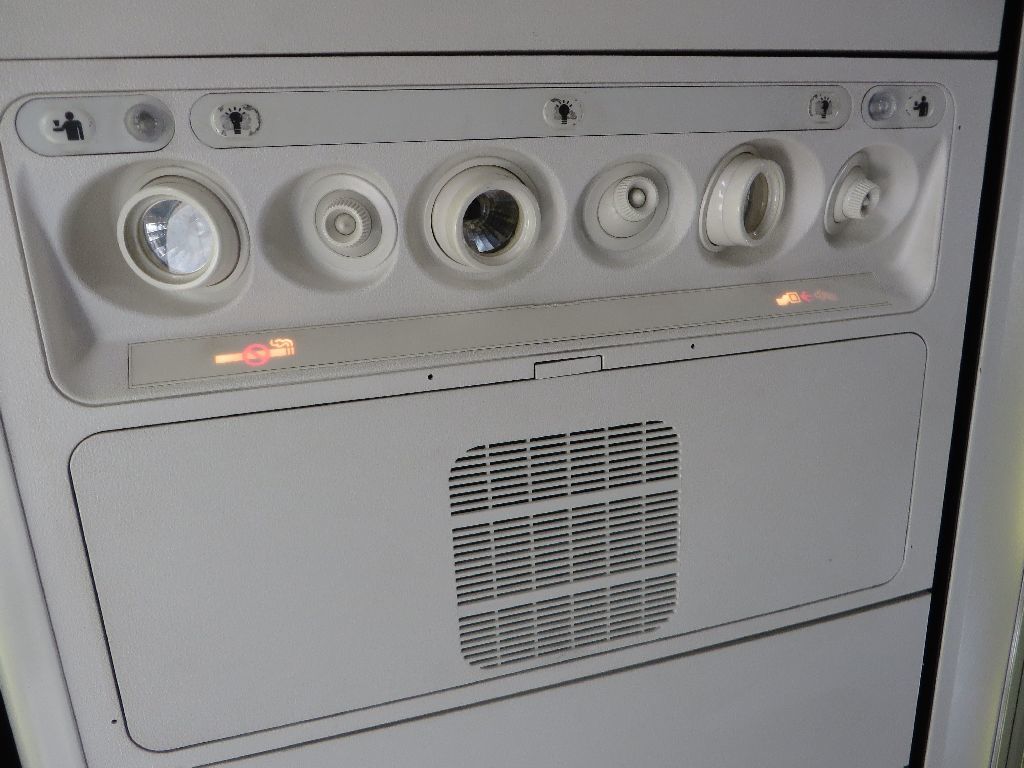
Another FM aircraft pushed back before taxiing to the runway

Our turn to push back : it was 10:41, i.e. one minute behind schedule
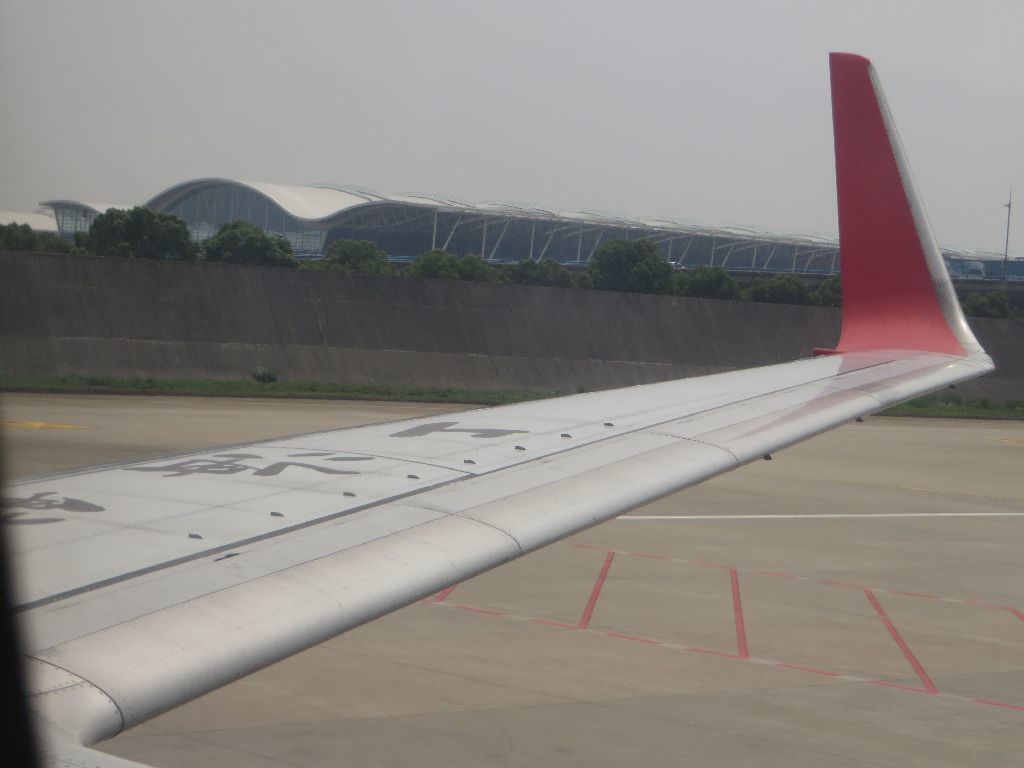
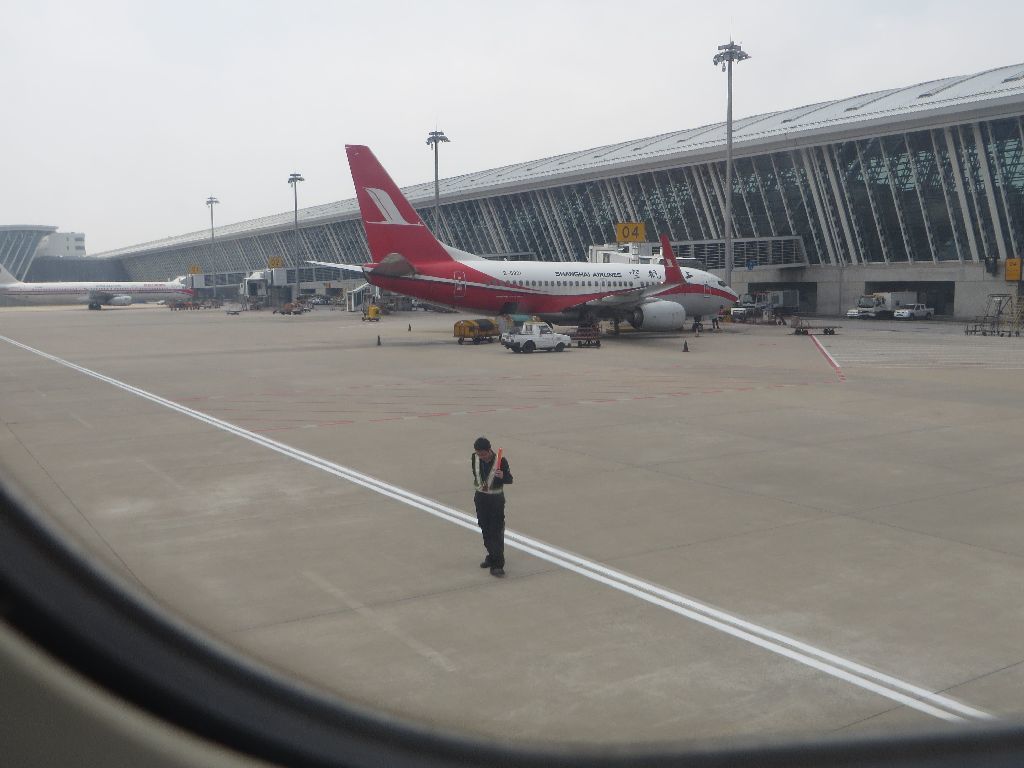
Meanwhile, safety demonstration on the IFE screens

The domestic extremity of the terminal

A detail of the jetbridge with 汇丰 advertising (HSBC in Chinese)
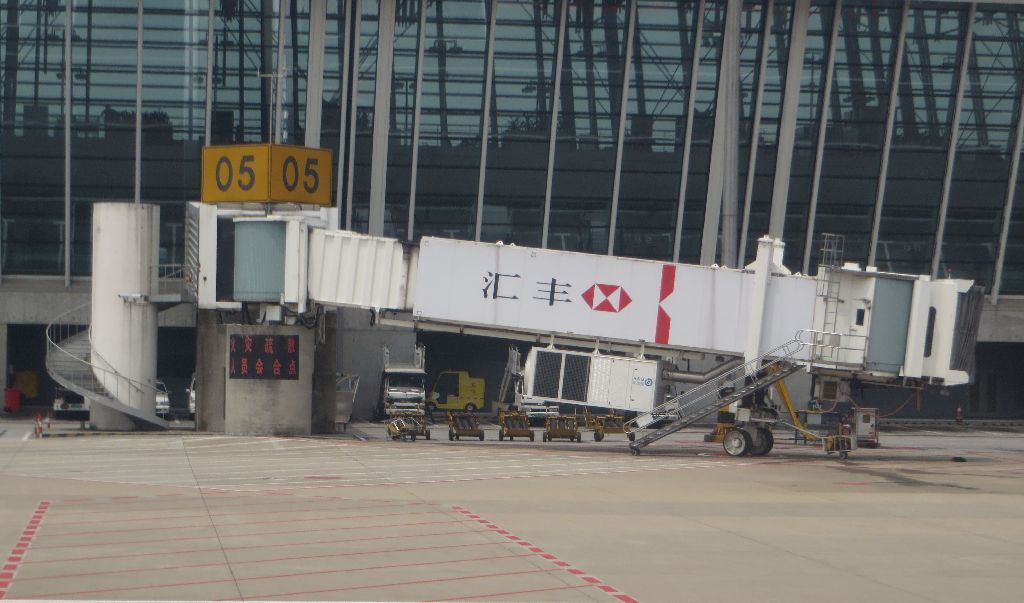
The ground staff shows the pennant of the downlock pin (Thanks to NGO85 for teaching me the correct name!)
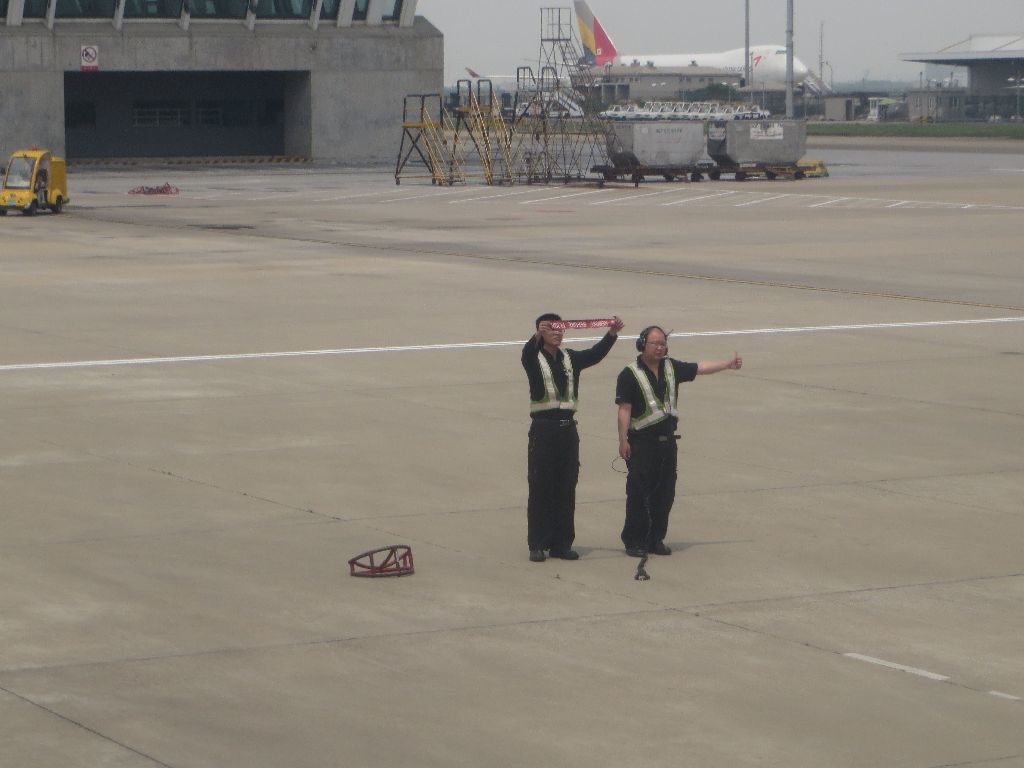
… and waves for an extended time at the pilots and the passengers in the taxiing plane
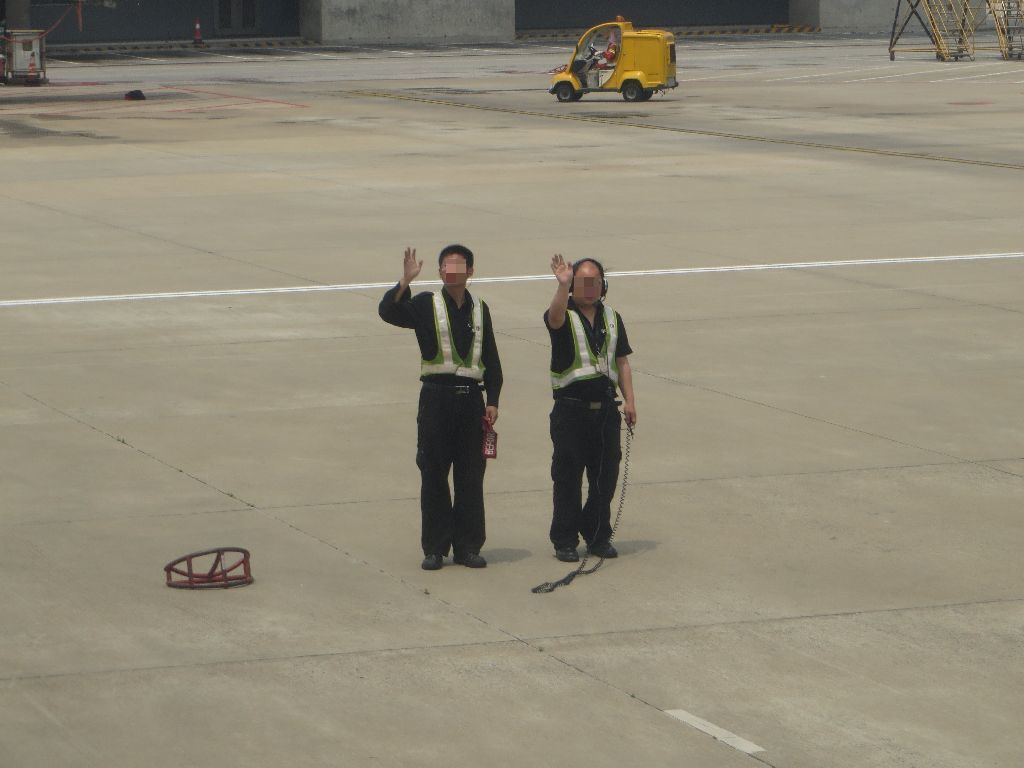
Now we were on the runway side of the terminal, with the gates dedicated to international flights

Mu’s new logo, behind the old one

This kind of white pole in the center of this picture ?
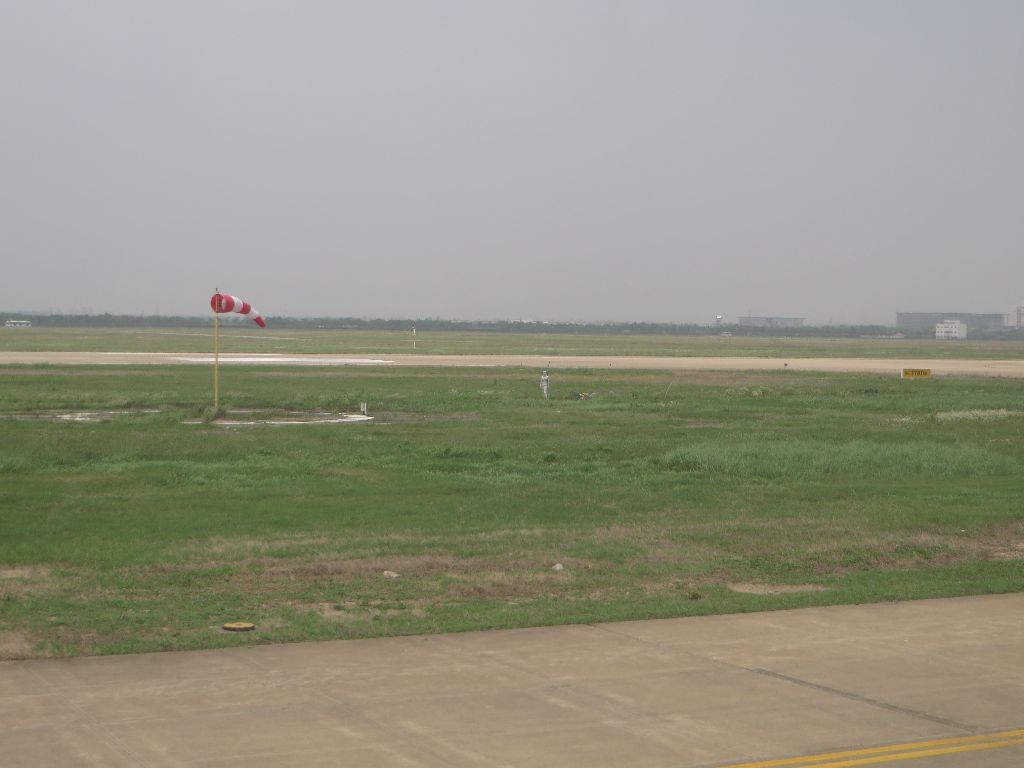
It appeared to be a scarecrow, and I do not know if it was more efficient there than in the fields for scaring birds away. There were several in the grass between the taxiways and the runway. To date, I have never seen such a thing in any other airport.
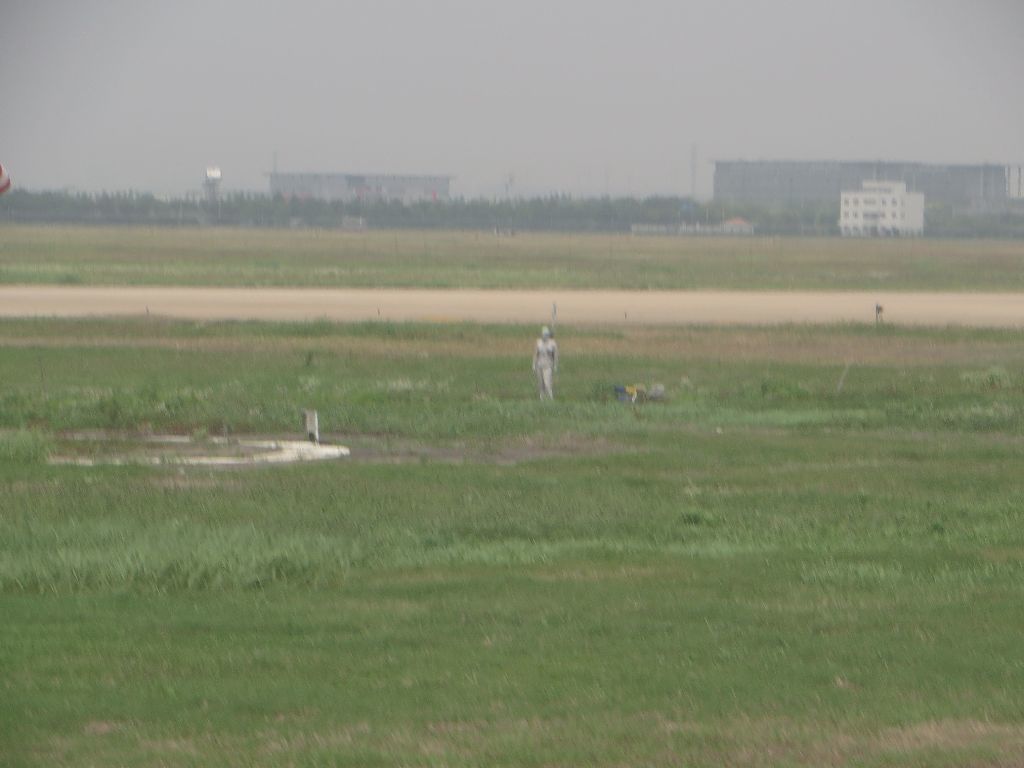
Landing of a China Airlines aircraft, certainly coming in from Taipei
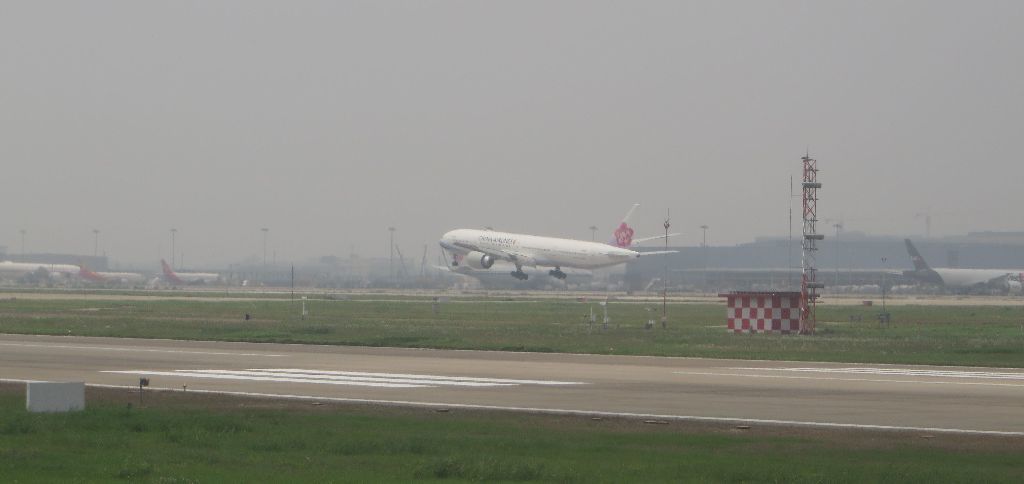
Now was our turn
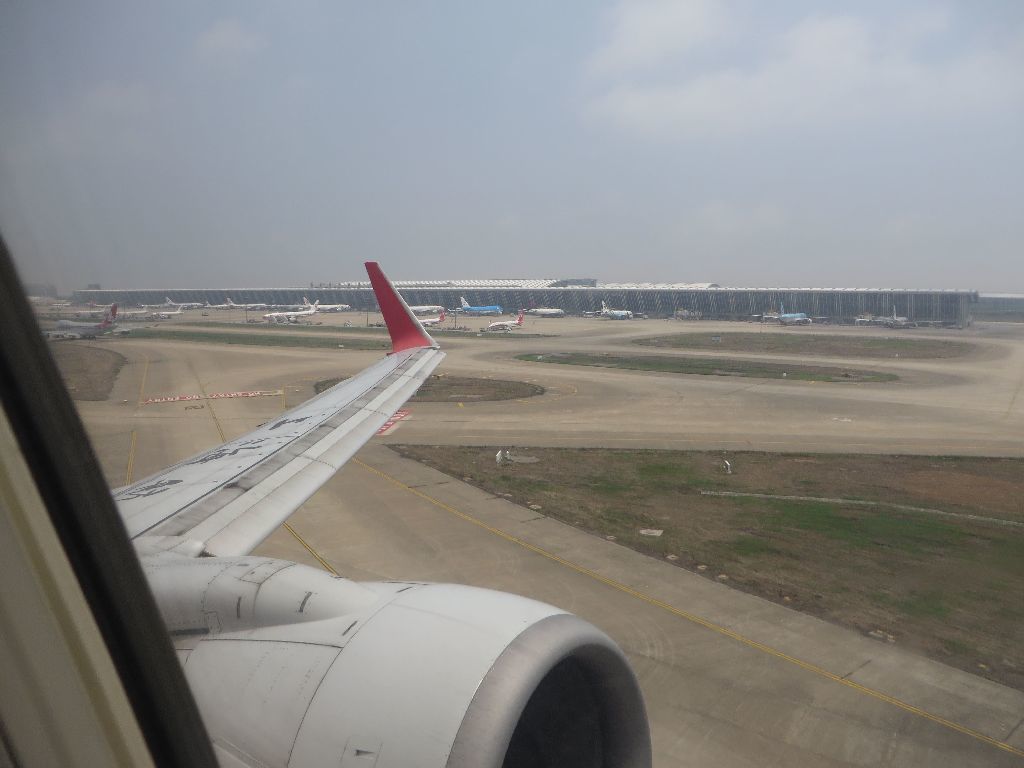
The runway in use that day did not allow me to see the terminal while taking off.
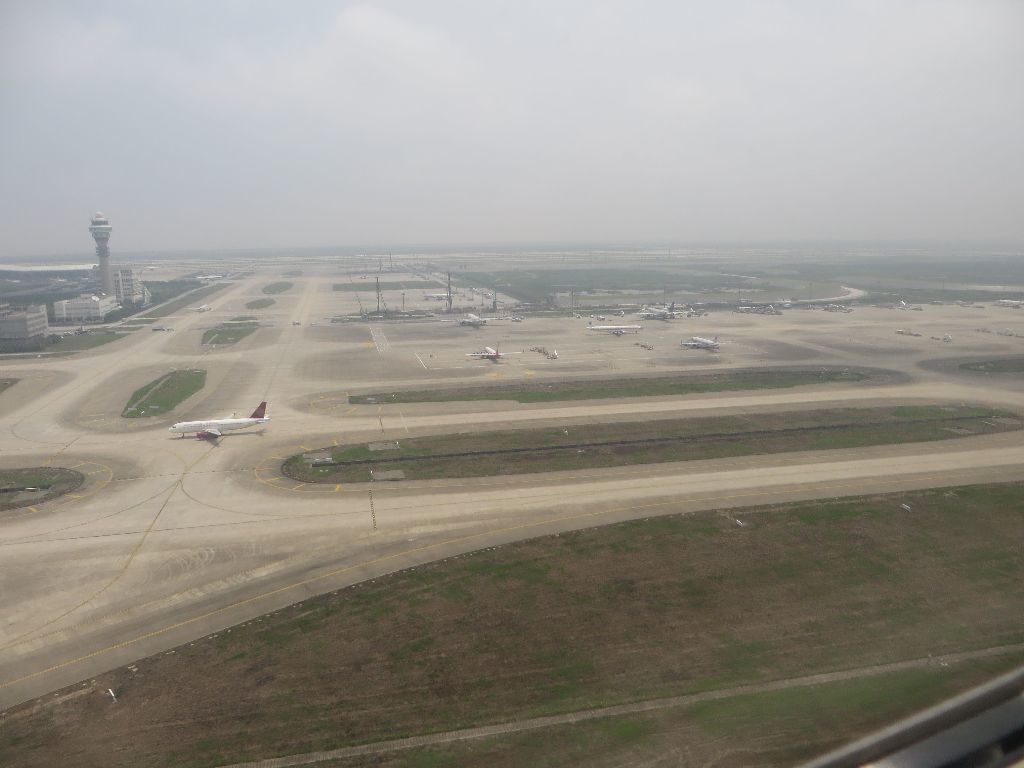
A remote parking area

A maintenance zone?
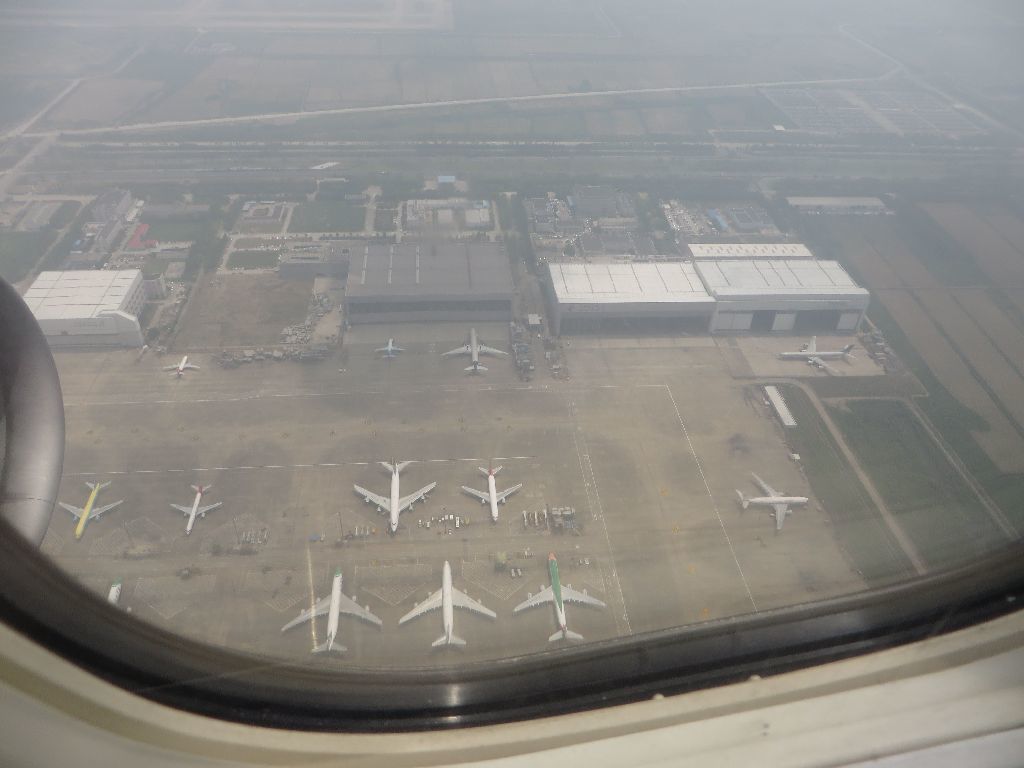
The air was as usual hazy, but somewhat less than usual

A meteorological curisity : the plane went through a last and very thin layer of clouds before reaching the blue sky.
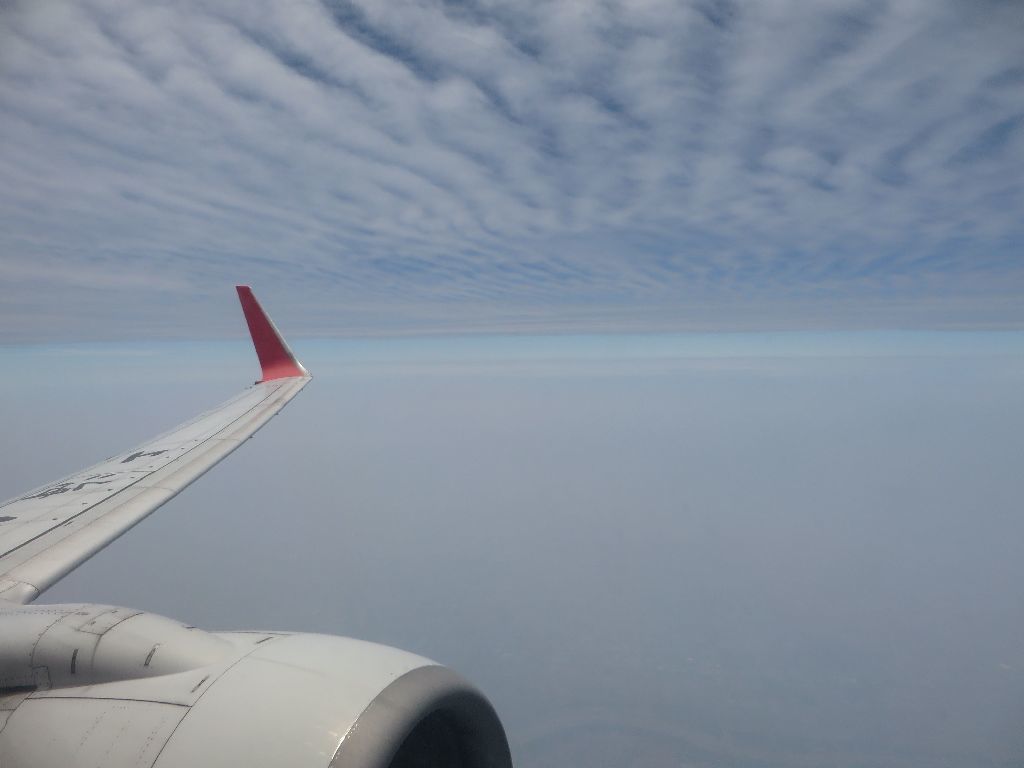
It was very hazy all the way through
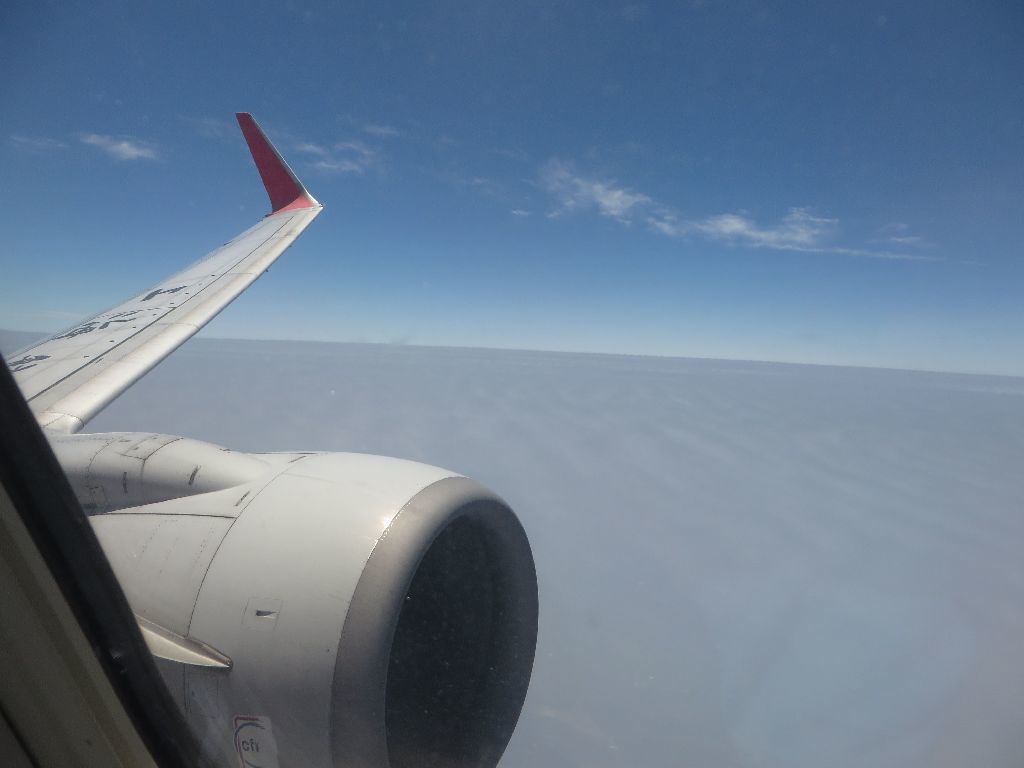
I did not try to identify this landscape
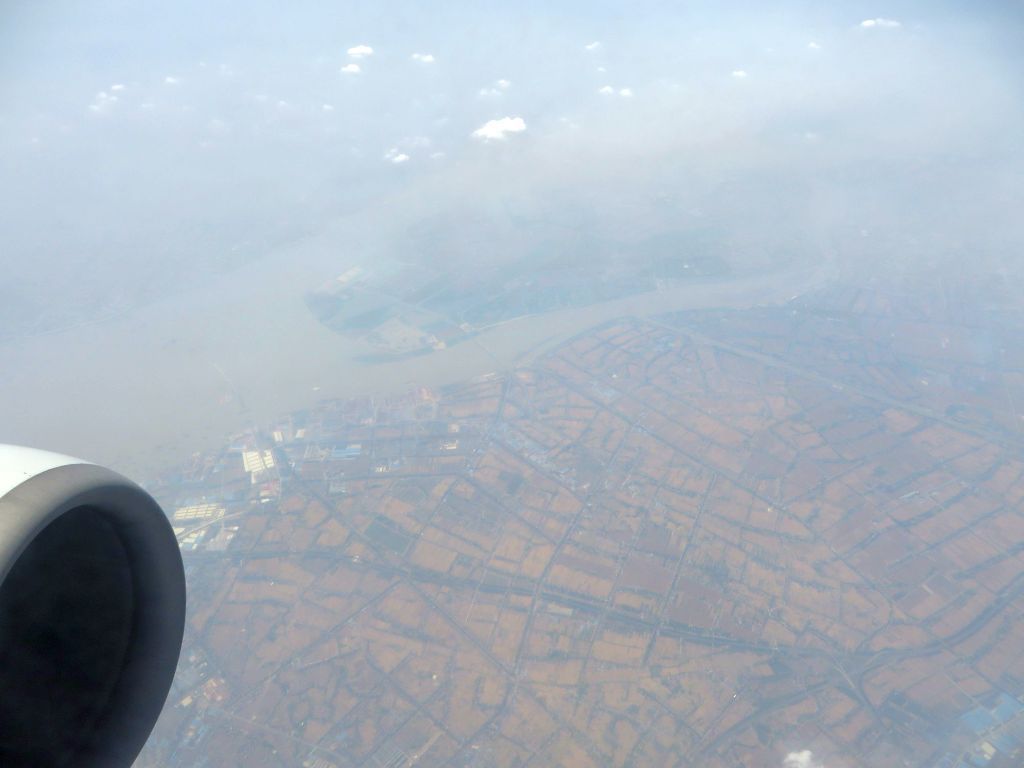
Service began
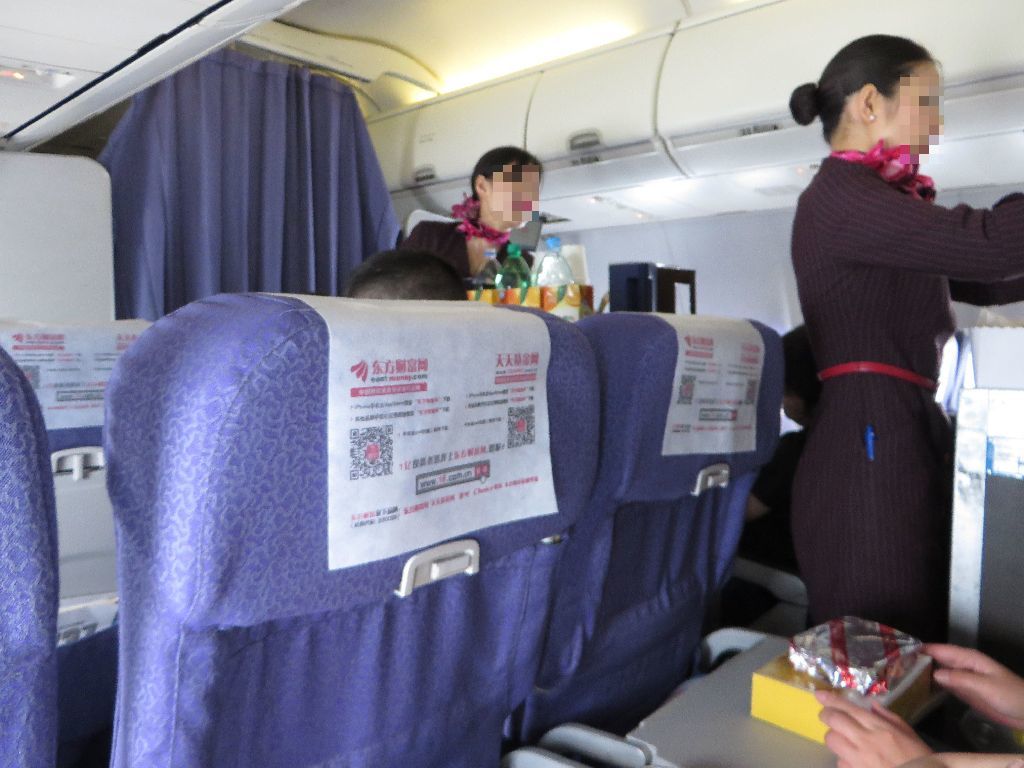
This was the meal, as received on the tablet

And after unwrapping
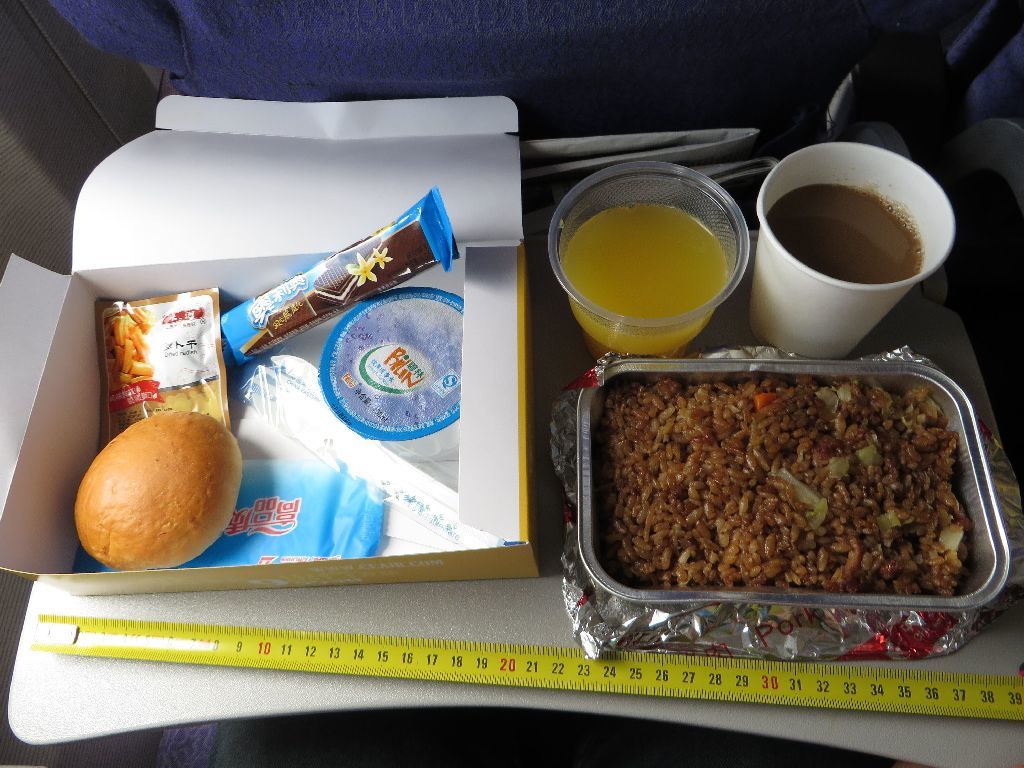
Once burnt, twice shy : Mrs Marathon has a very bad food experience on the preceding flight, and did not touch it. I ate the same (and much worse) when I was stationed in China, and this fried rice with vegetables and very little meat was OK.
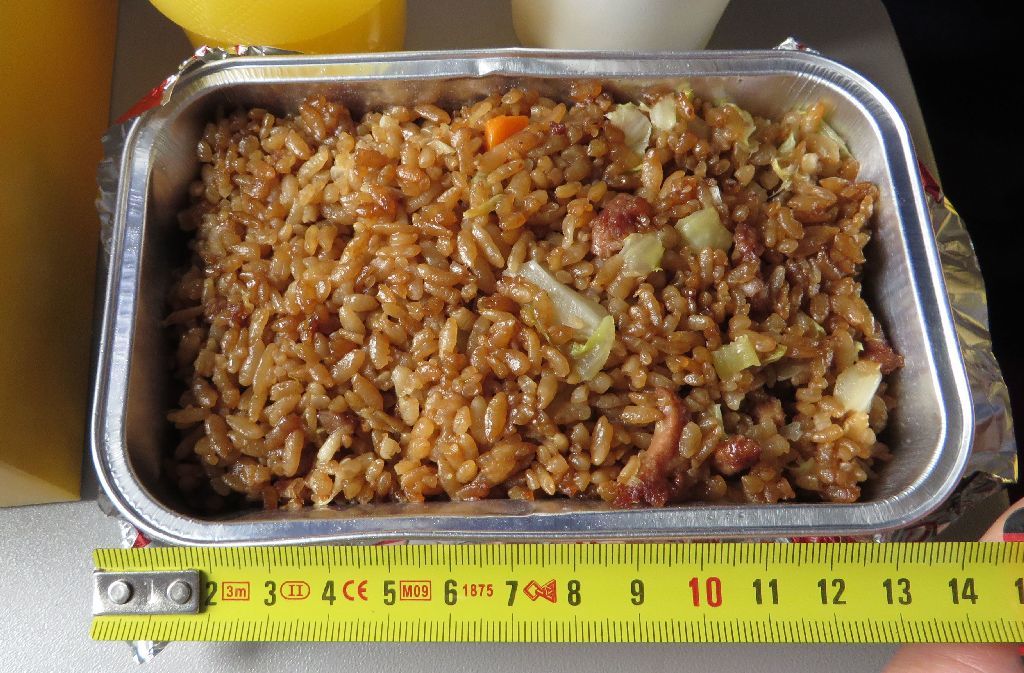
The reclining of the seats was symbolic …

And mine did not recline at all, because the button had disappeared
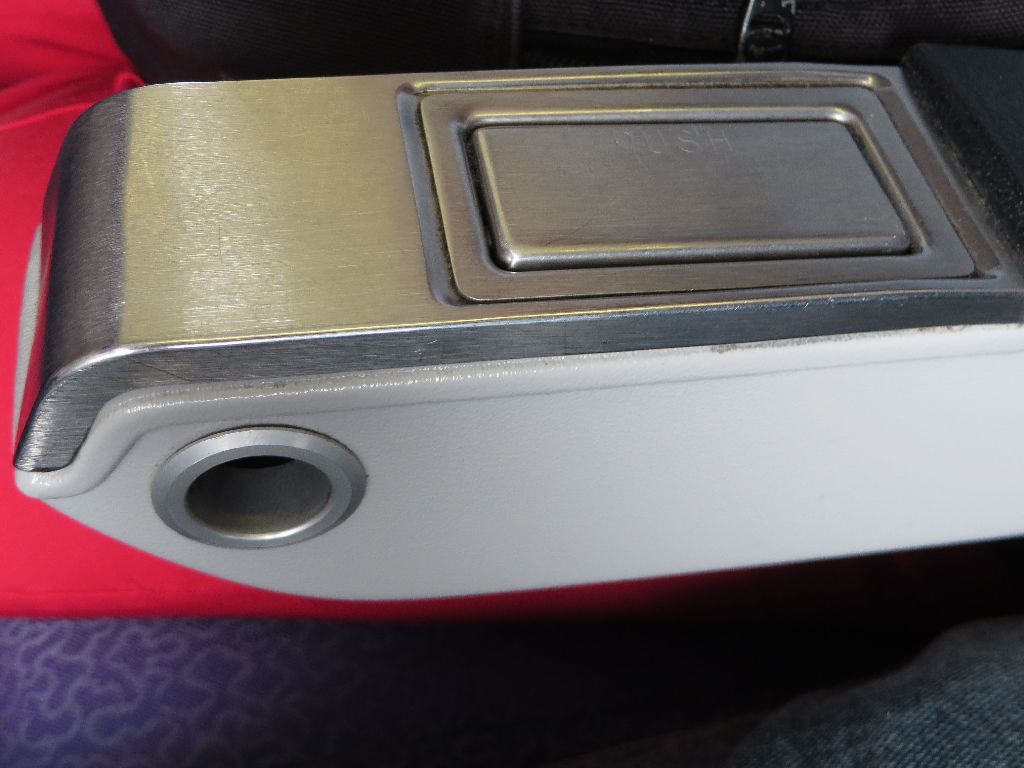
Descent through the clouds towards Zhengzhou
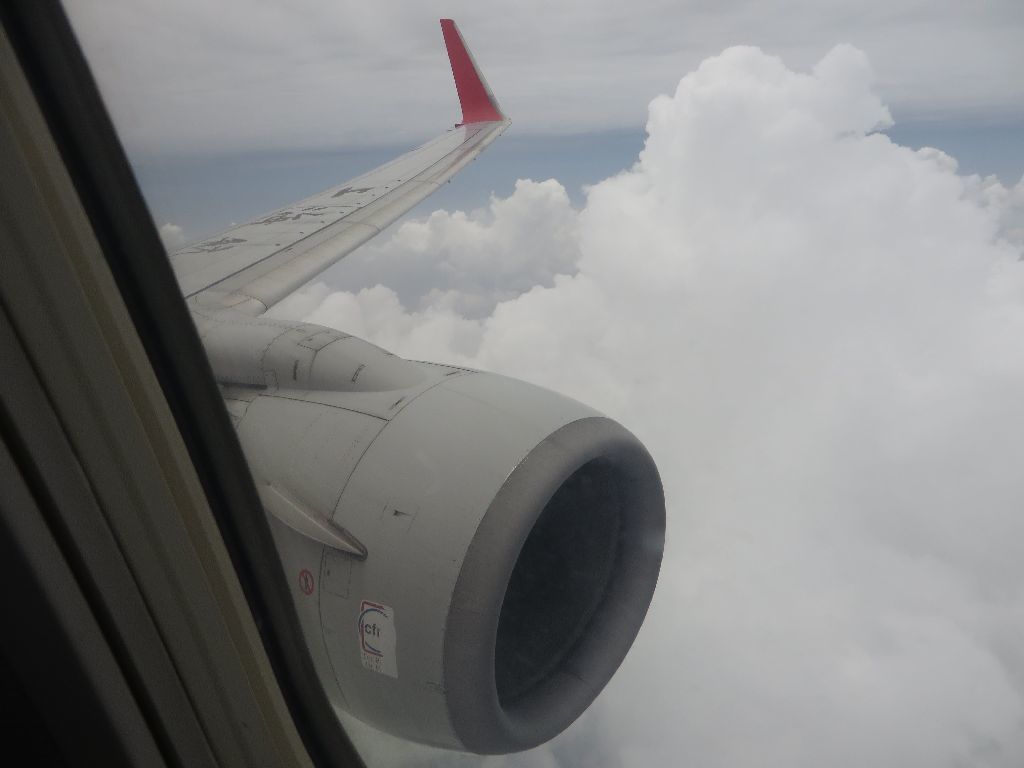
The cloud cover was very low, even though it was not especially dense
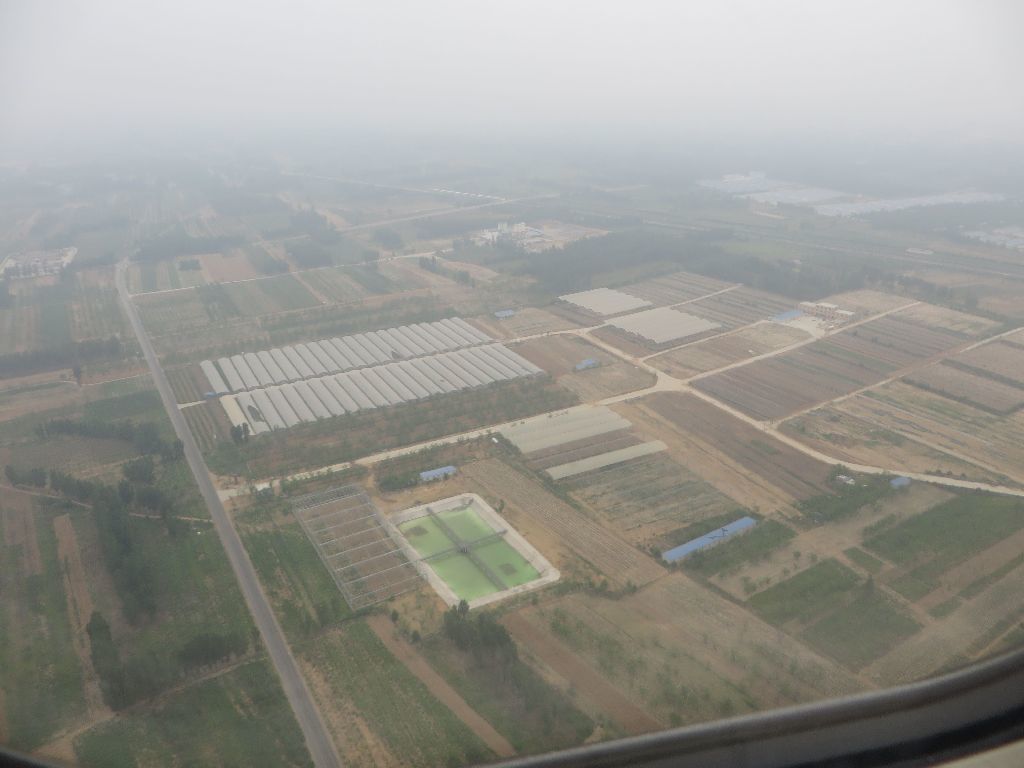

Three planes (MU, CZ and CA) were waiting until we had landed

Two CZ aircraft and a FM one parked at the terminal
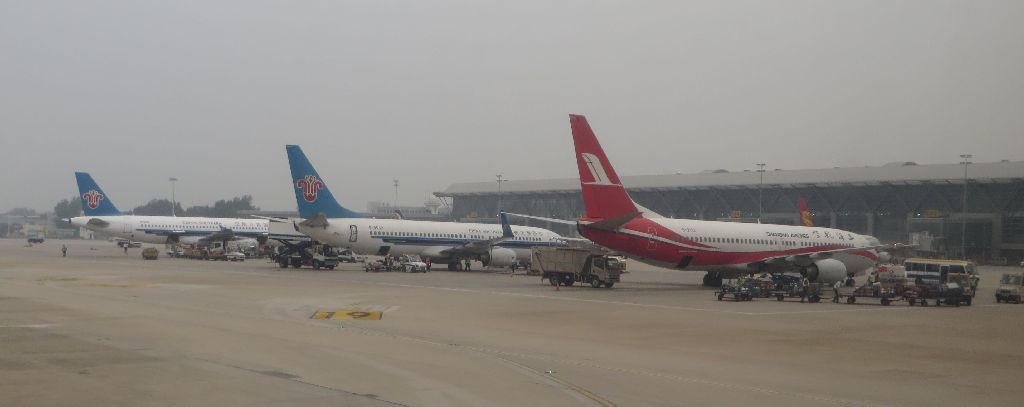
Capital Airlines only had CRJ-200s when I flew with them in 2010. Five years later, they had grown to A319s like this one.
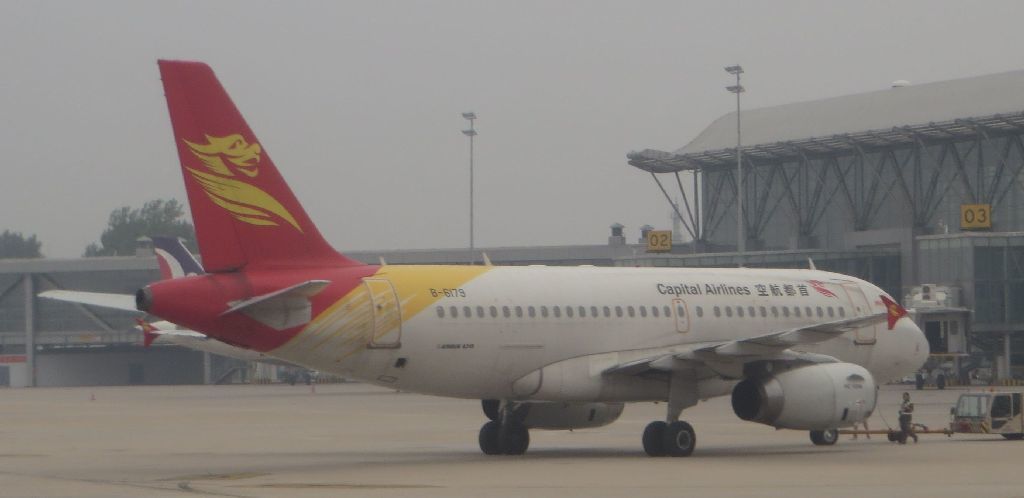
Two cities located close to Hong-Kong were represented here, with Shenzhen Airlines (A320)
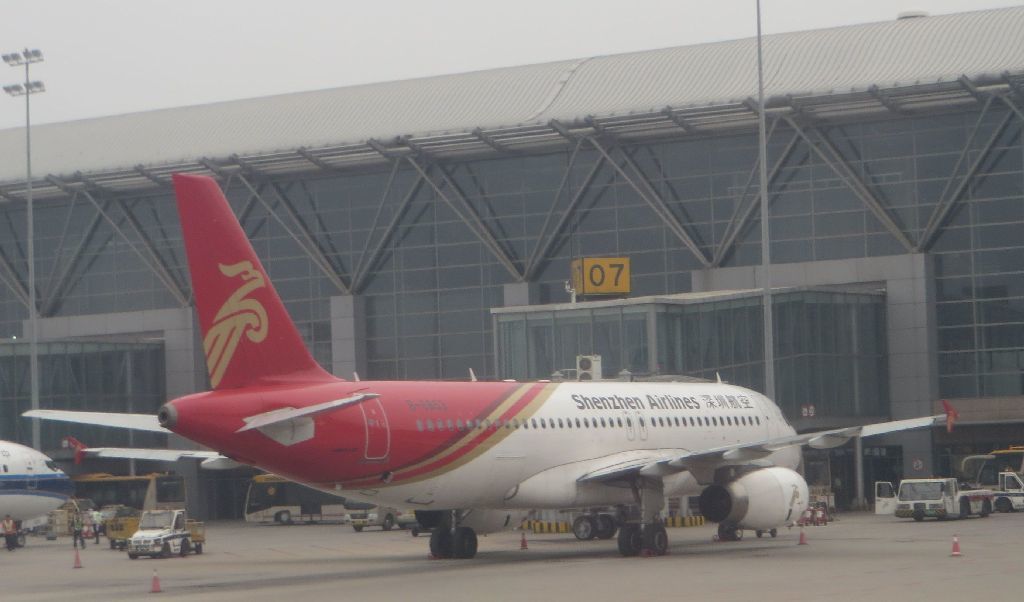
And Air Macau (A321)
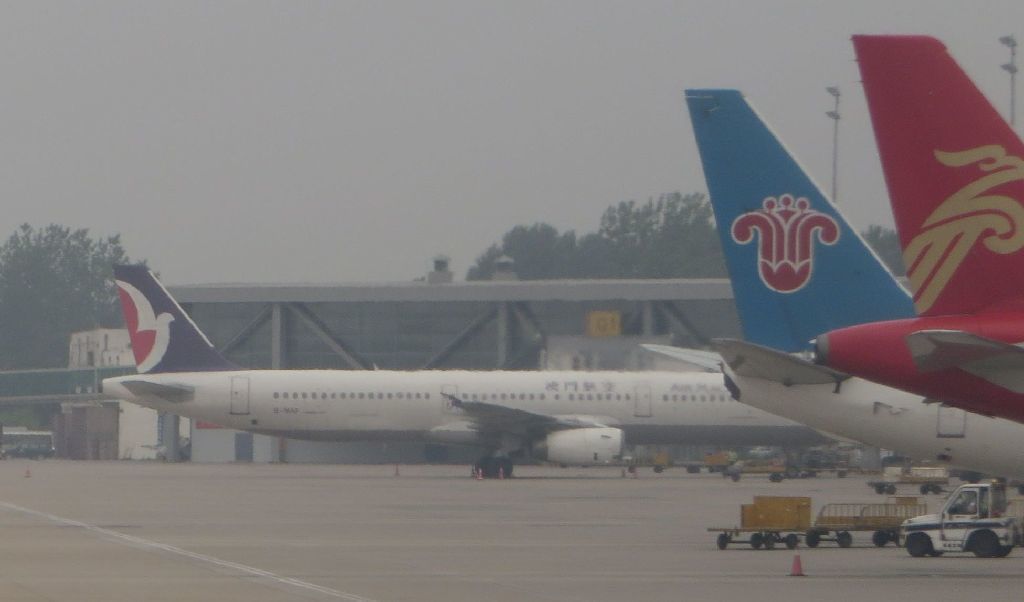
Parking next to this CZ A321
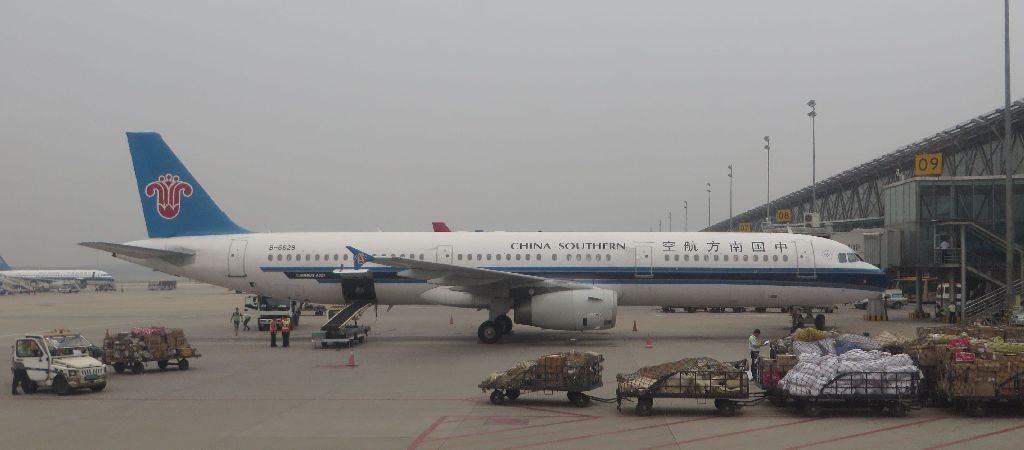
A last look at our aircraft after deplaning

Airport staff holding large loudspeakers reminded the location of the luggage delivery for each flight. It was very “backwater China” style and tiring.
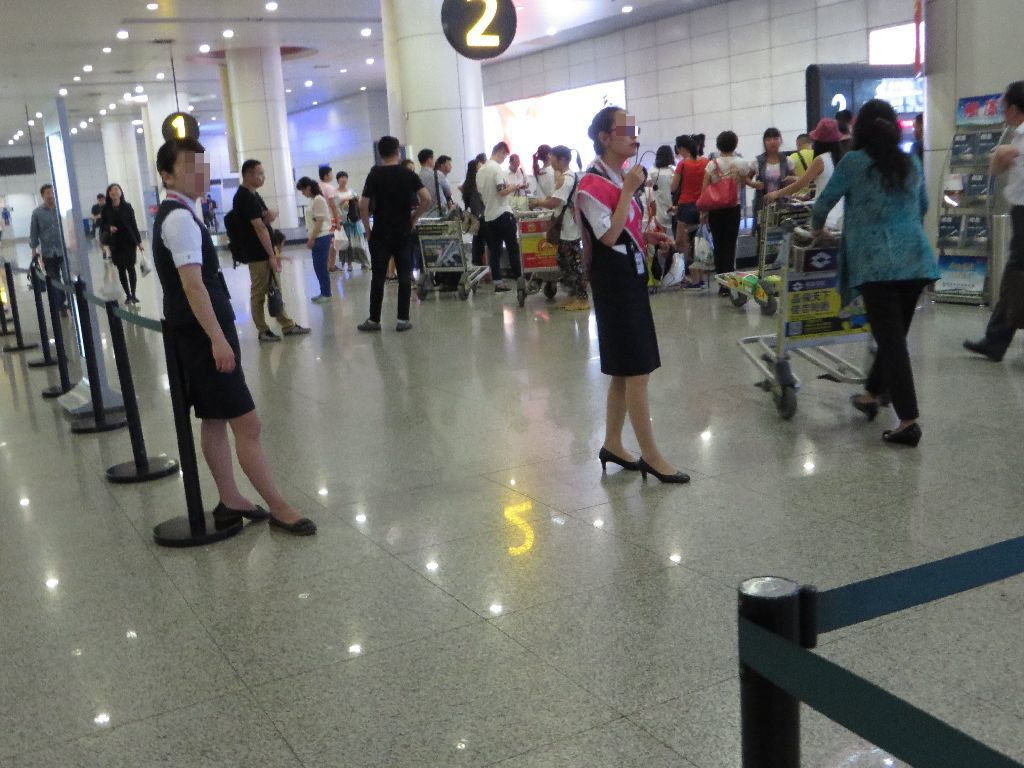
In the mean time, I went to the toilets. Odor photography has not been invented yet and it is probably better for the readers of this report. The floor was also very slippery due to the pools which I hoped to be water from the sinks.

We were not going to Zhengzhou, but to Kaifeng, 70 km from there. The reason that we had not landed in Kaifeng was that the only runway in Kaifeng is that of an airbase, seen here from the top of the Po Pagoda.

At the far right of the picture above, there was a single aircraft partly covered with tarpaulin, seen here at maximum optical and digital magnification. It was not very easy to identify it as a Y-7, i.e. a Chinese copy of the An-24, built after the Sino-Soviet split in the 60’s had interrupted the technology transfer.

It was impossible to get there by plane, so we needed to take a bus
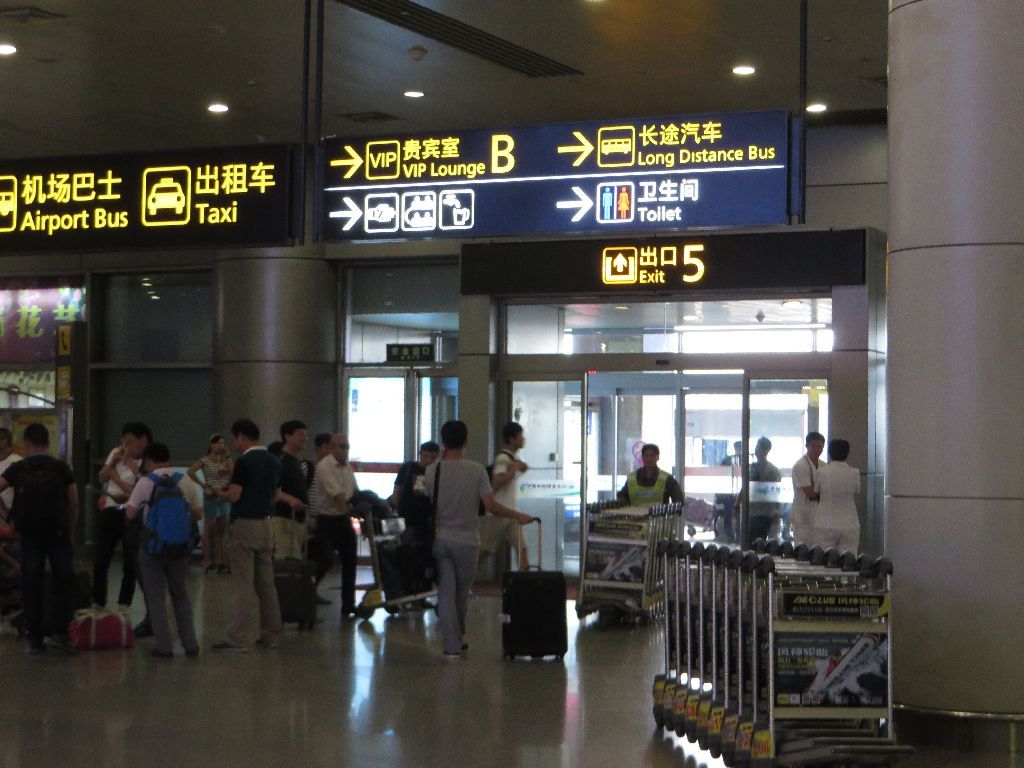
The fare was as usual extremely cheap (40 RMB), but bad luck, we had missed the 13:00 bus and the next one was at 14:30 (the last column was the schedule of the incoming buses)

There was a free wifi, but like everywhere in Mainland China, you needed to provide a code received by SMS on a Chinese cell phone number, because the Chinese police wants to know who is hurting the harmony of the society by propagating information which does not match its definition of a healthy internet (using some of the Chinese politically correct language).
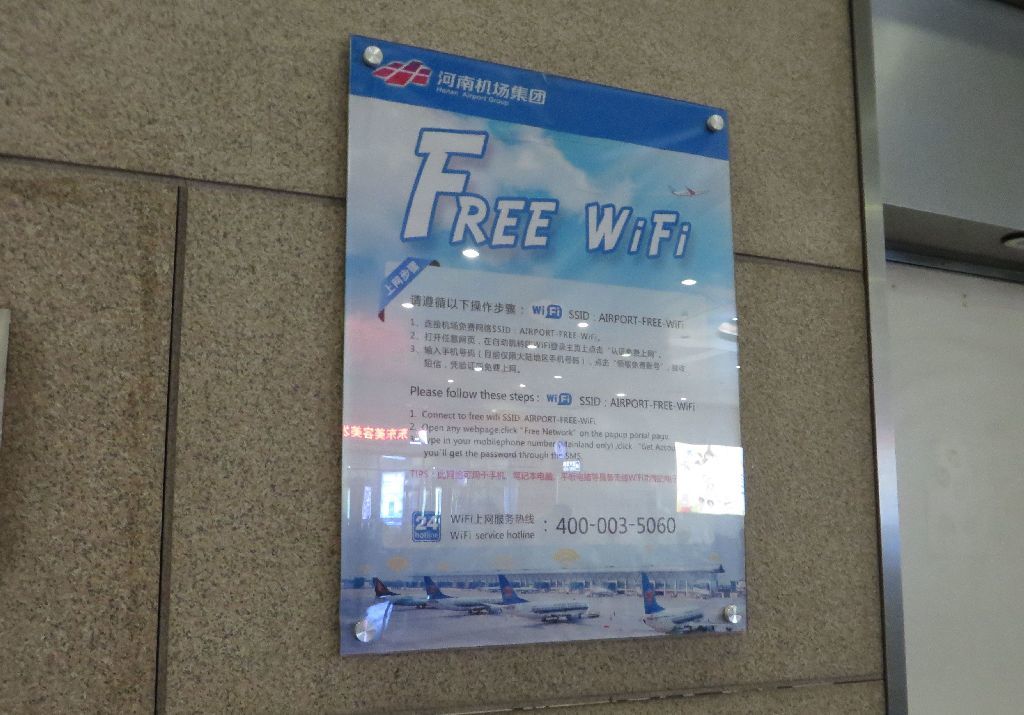
The far end of the hall landside was actually the waiting room for the long distance buses

No need to stress : all useful information was on this BIDS (not a FIDS^^)
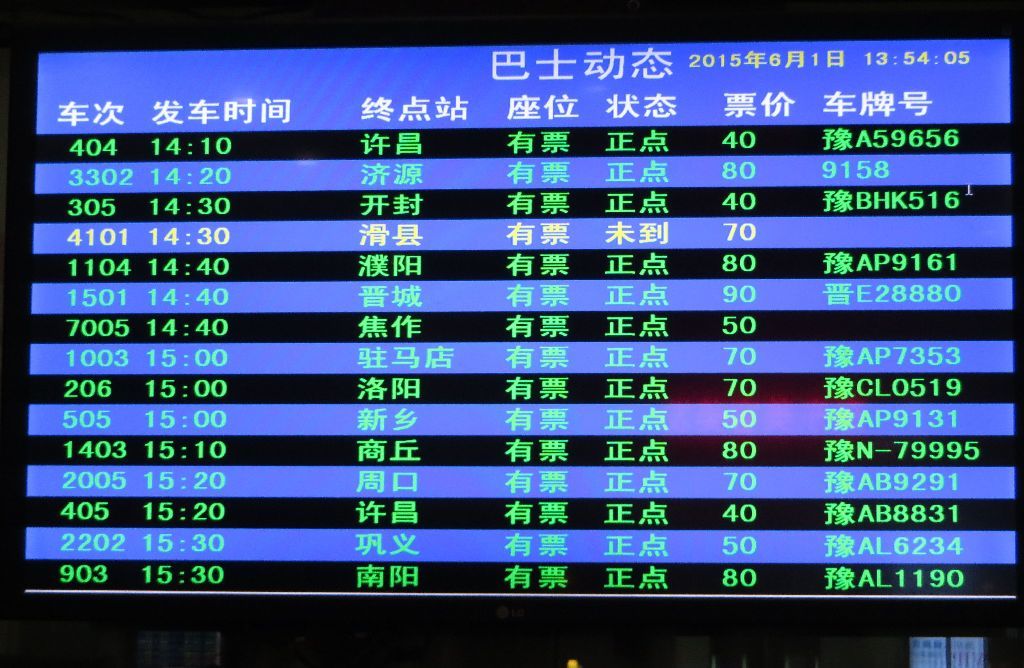
From left to right : the bus service number, the time of departure, the destination, the availability (有票 = there are tickets [remaining on sale]), the punctuality (正点 = on time), the fare in RMB and the registration number of the bus. Most of these items are on the ticket that I had bought.
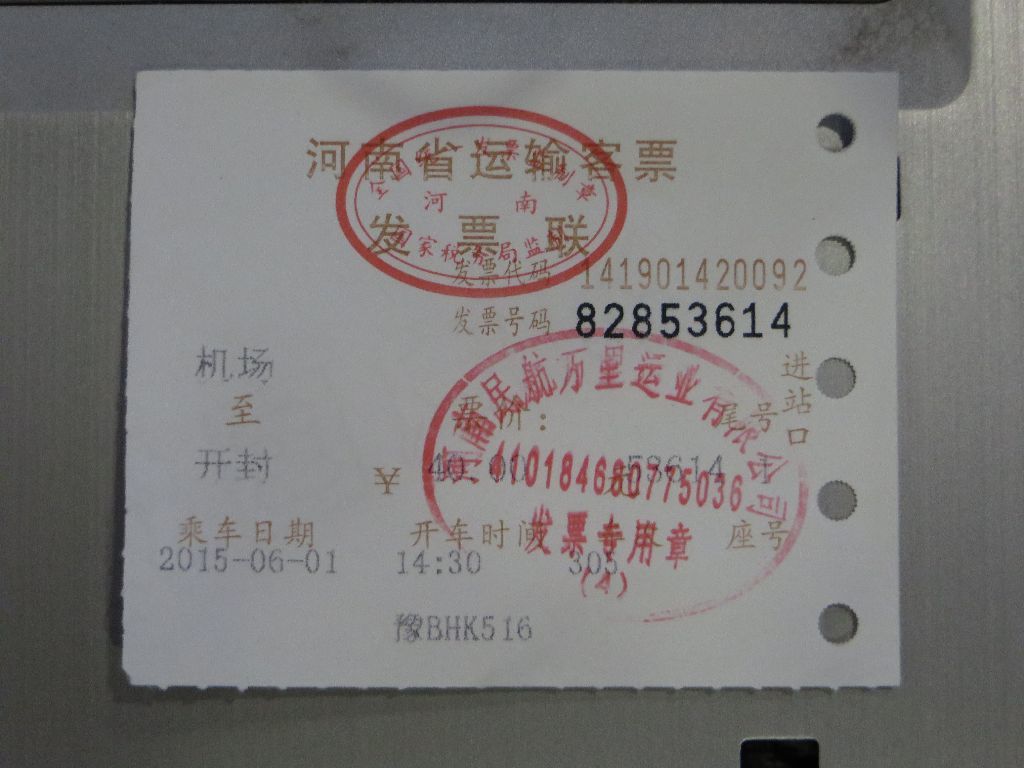
No need to stay on the lookout for the bus outside : a staff called for boarding at about ETD-10’, of course in Mandarin only. No uncertainty: it was indeed the bus registered 豫BHK516.
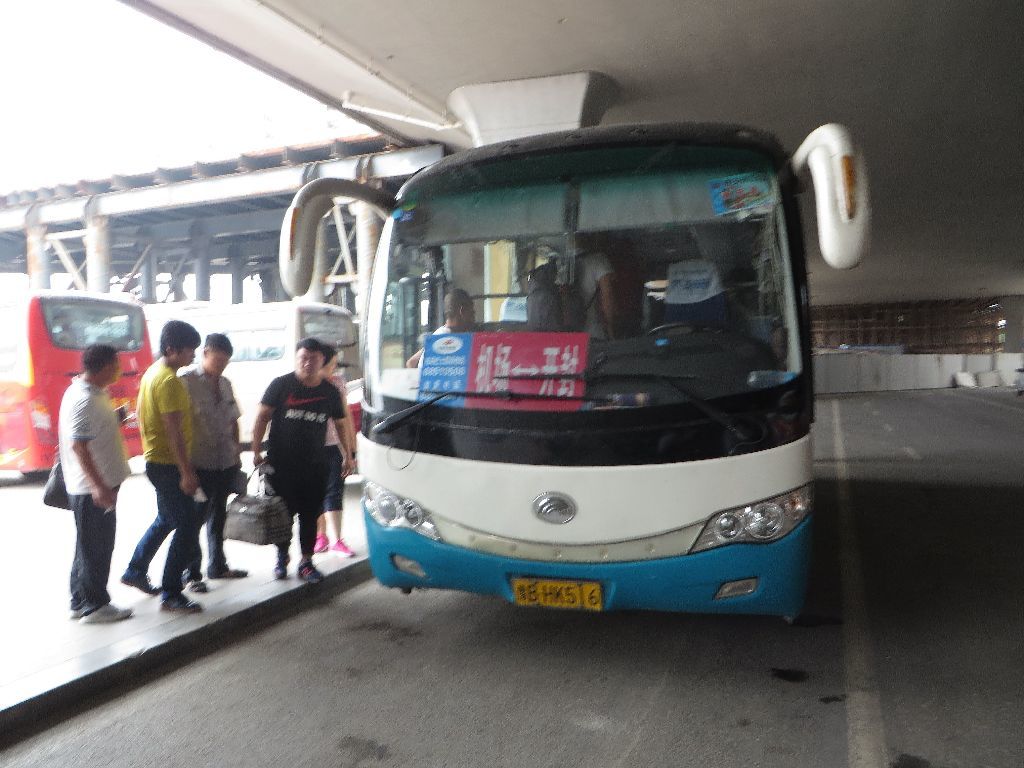
It was not very comfortable, but it would be OK, despite the reduced seat pitch.
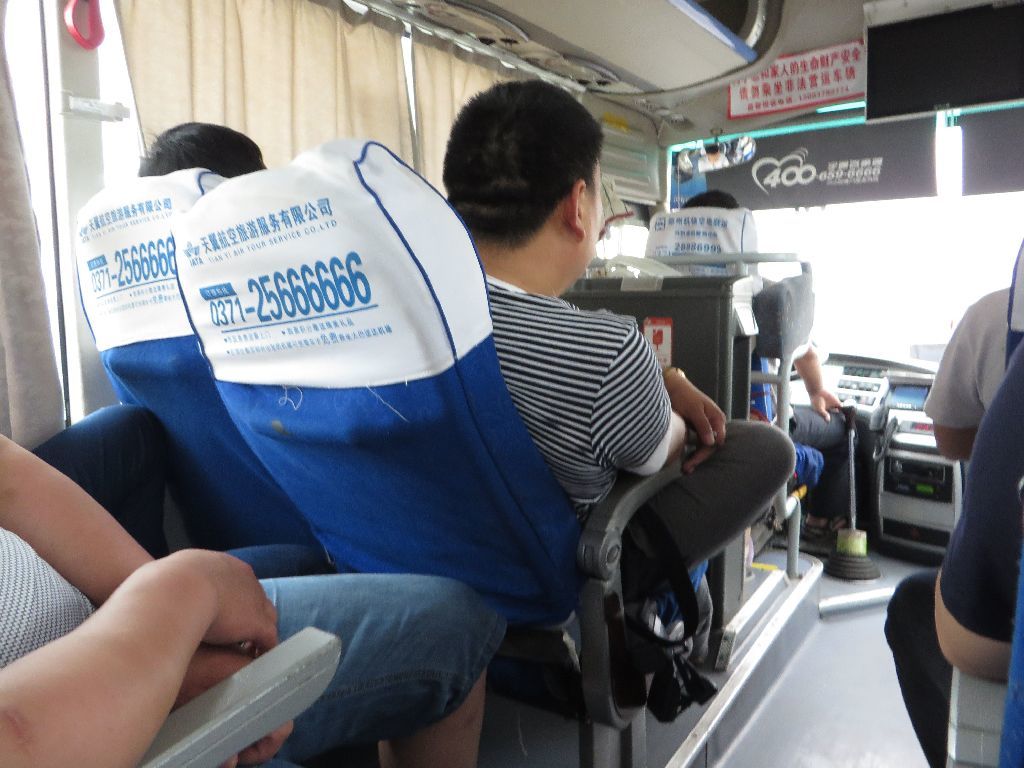
Measured my way, the distance from the seat limit to the back of the seat ahead was 21cm, vs. a typical 26-27 cm in a standard Economy seat on a plane.

Why go to Kaifeng ? Not to find the traces of the Jewish community which was the oldest and largest in China in the 11th century; it developed there at the time of the Silk Road when Kaifeng was the capital of the Northern Song. Today, all what remains is a tiny association in a narrow lane, in the vicinity of the place where the synagogue was – nothing of it remains today.
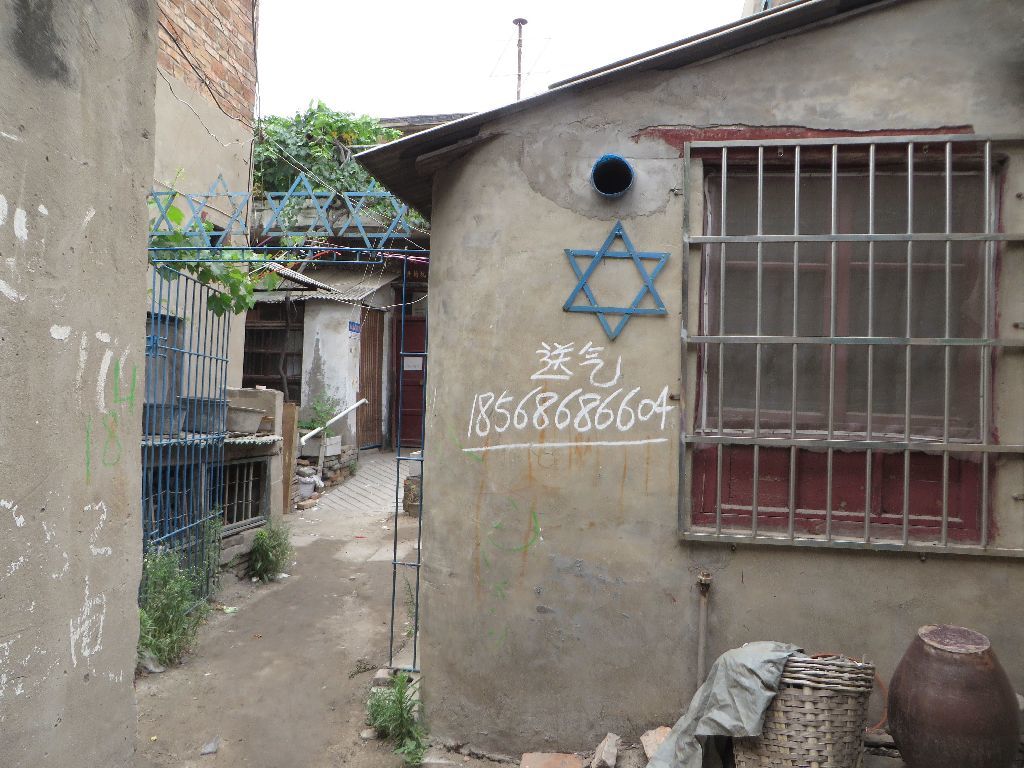
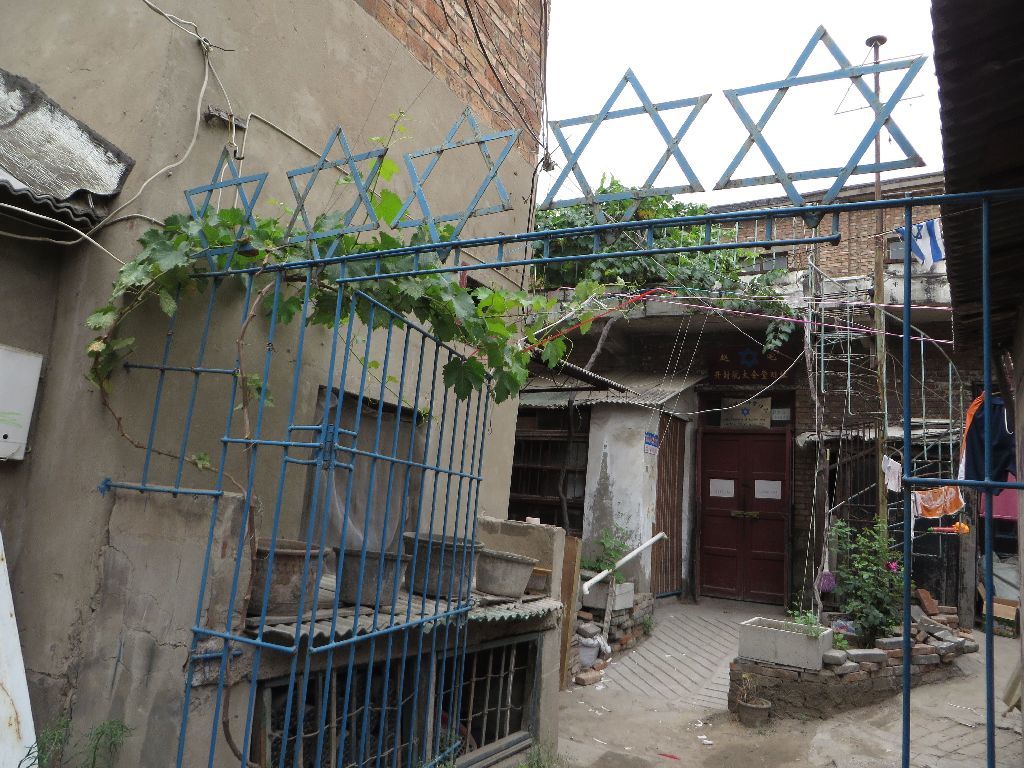
Kaifeng is indeed completely different today from the way it was at the time of the Northern Song Dynasty (960–1127):
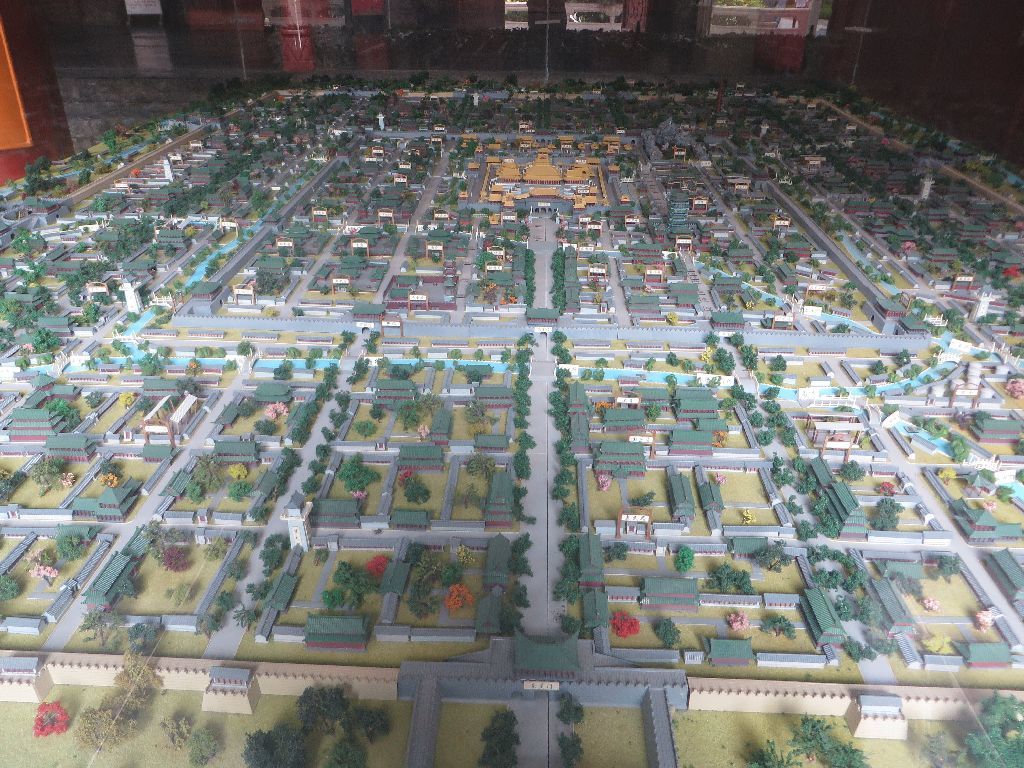
… with their palace of which nothing remains today
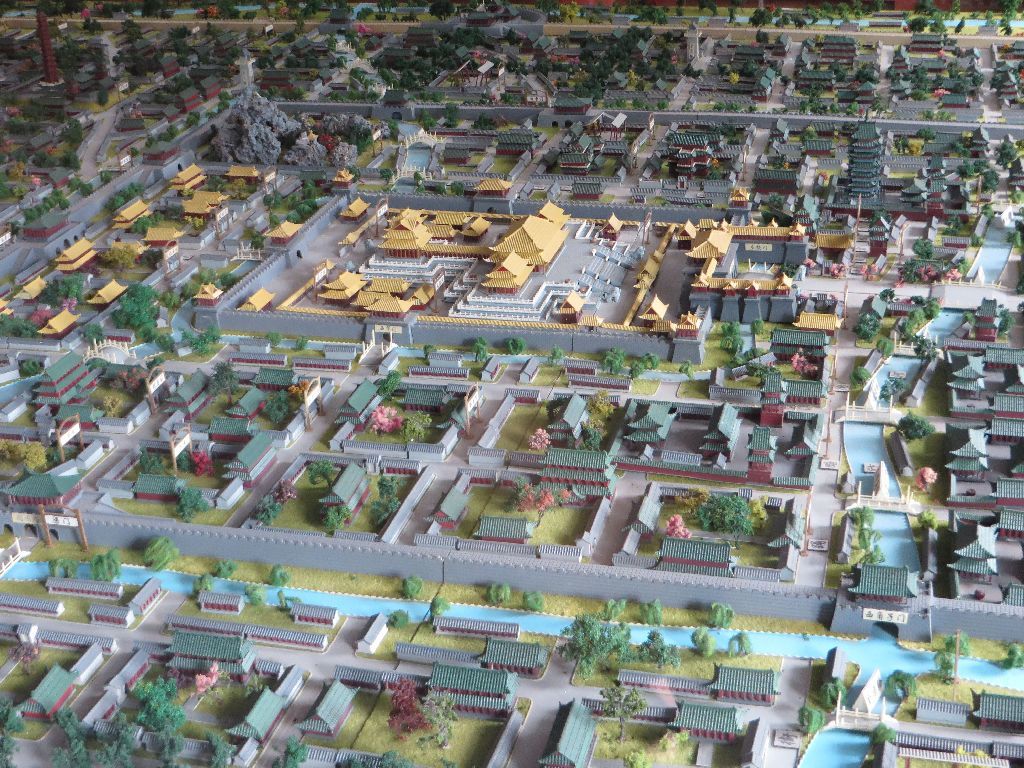
… apart from a few temples which can be found in these superb models exposed in the House of the Shanshaanguan Guild of Merchants
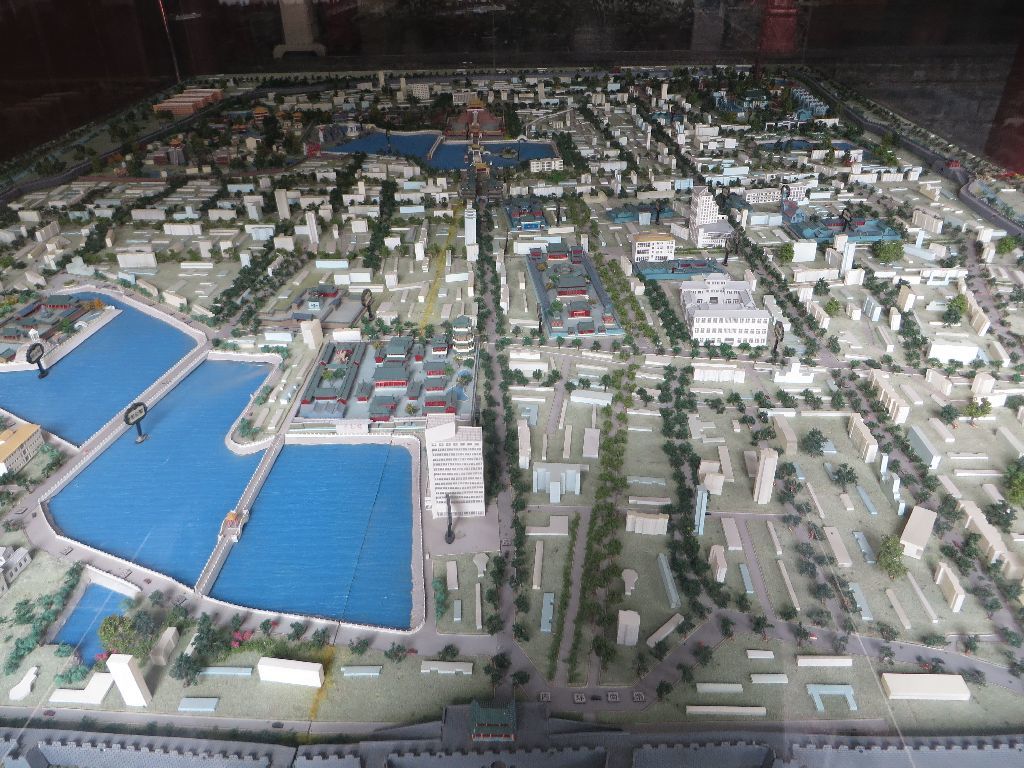
The present city walls (which appear at the bottom of the picture above) are from the Qing dynasty (1644-1910)
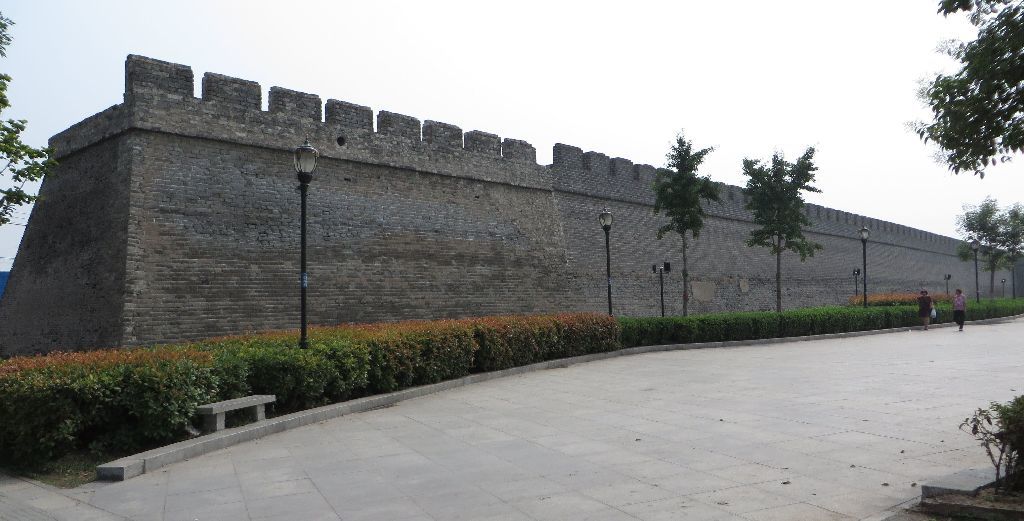
The remains of the walls of the Song dynasty are under 8 to 9 meters of silt, because the old city was perennially flooded by the Yellow River.
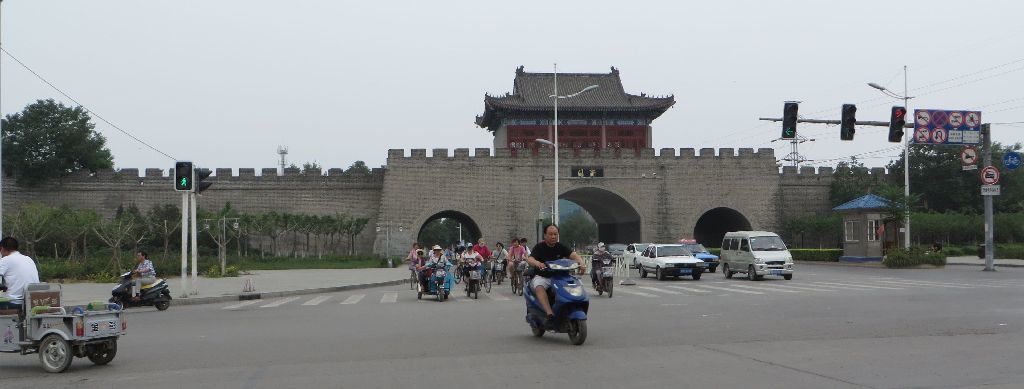
The models of the old city by themselves justify visitin the House of the Shanshaanguan Guild of Merchants, which true to its names was the association of the traders coming from the present provinces of Shanxi (the capital is Shijiazhuang) and of Shaanxi (capital : Xi’an), both located north of Kaifeng.

Yaqing Temple, a Taoist sanctuary founded in 1233 is worth visiting

… especially for its painted wooden sculptures under the overhangs of the roofs
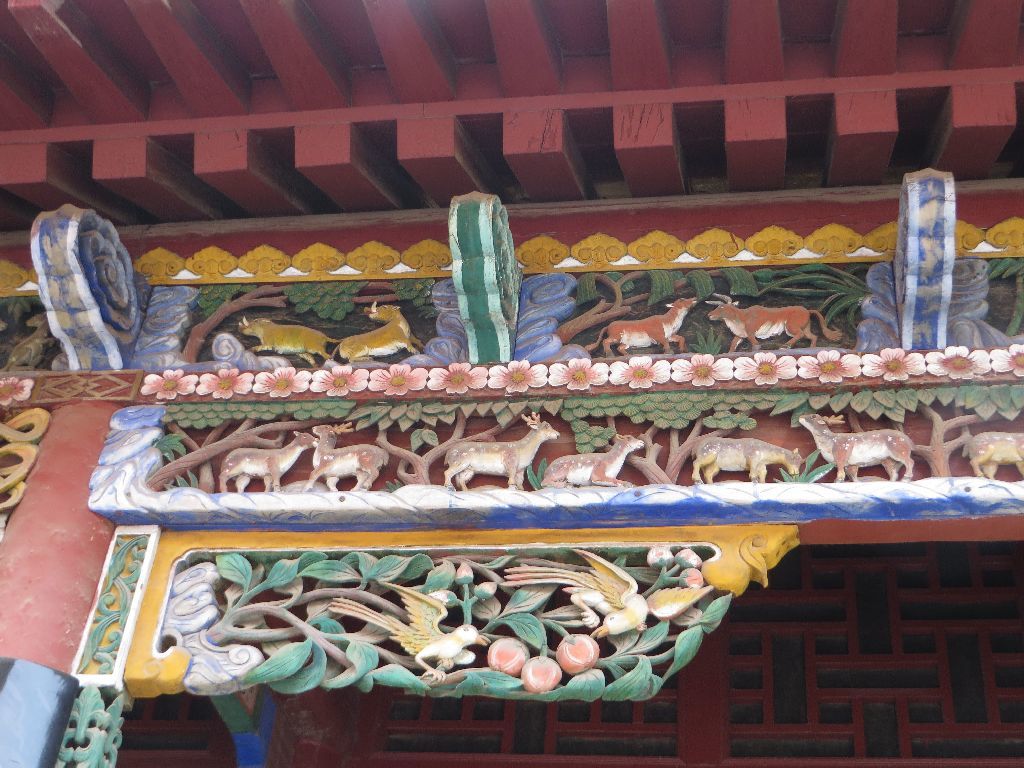
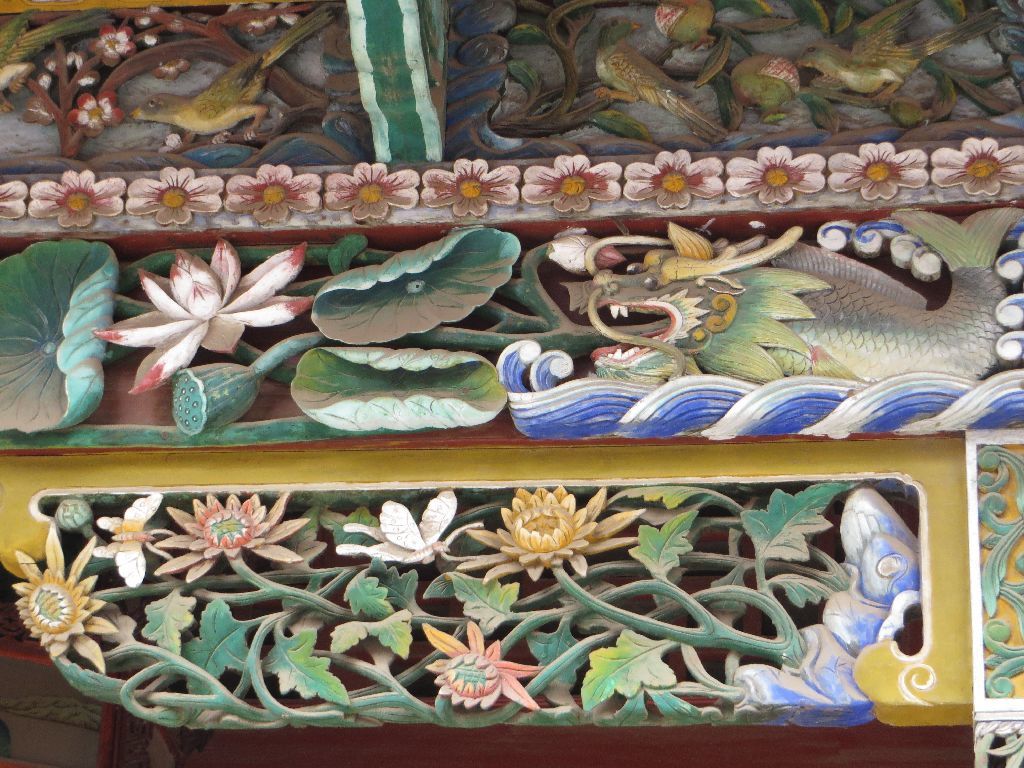
Visitors tied red good luck ribbons everywhere
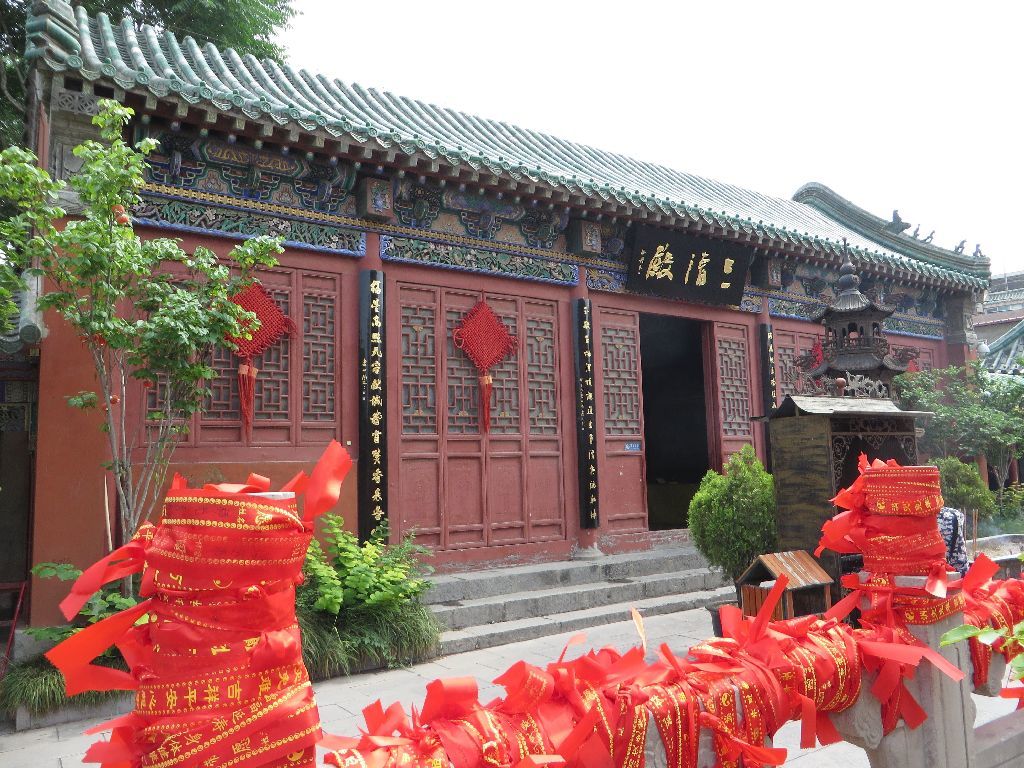
People come to pray there, the usual way, holding a precise number of incense sticks
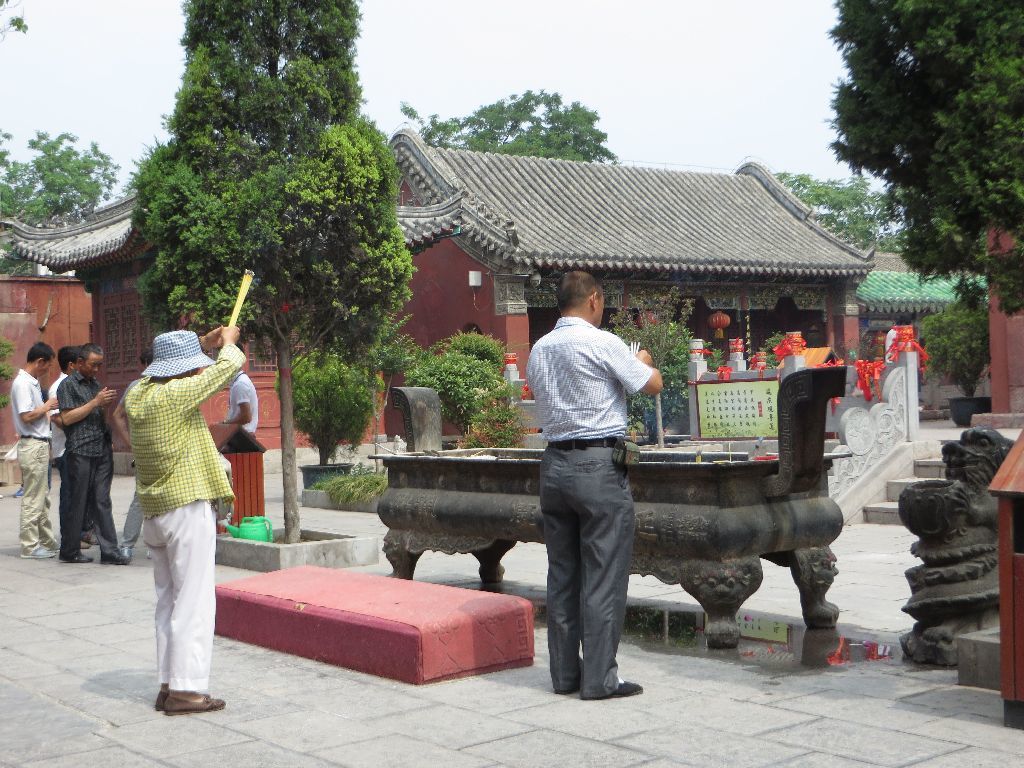
… or in a less conventional way : this man replaced the incense sticks by cigarettes

… that he planted exactly like incense sticks!

Kaifeng does not have many historic monuments any more (and because of that does not attract many tourists), but the most beautiful one is the Temple of the Great minister, which in its present layout is from the 17th century.
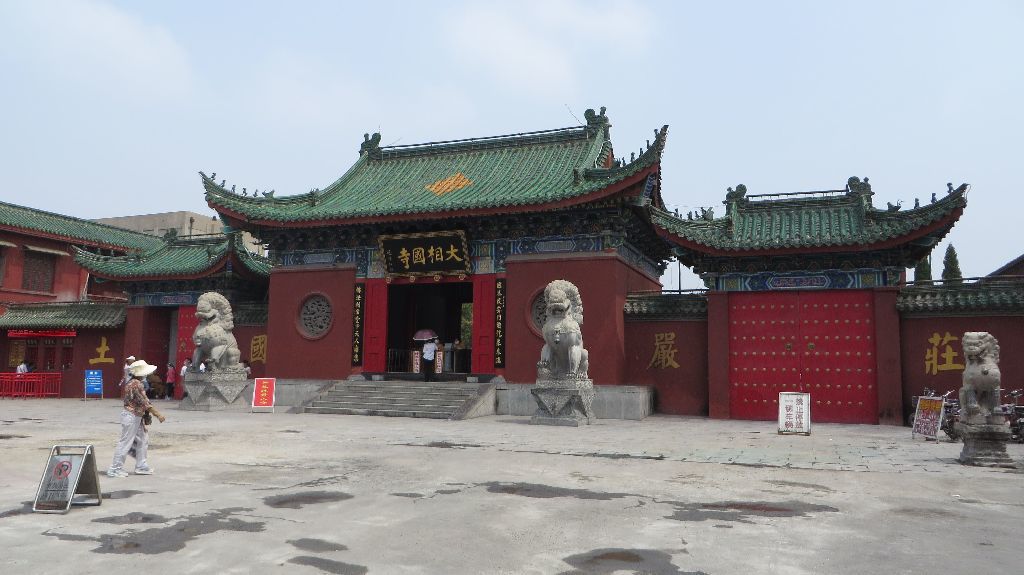
From the entrance pavilion with beautiful wooden framework
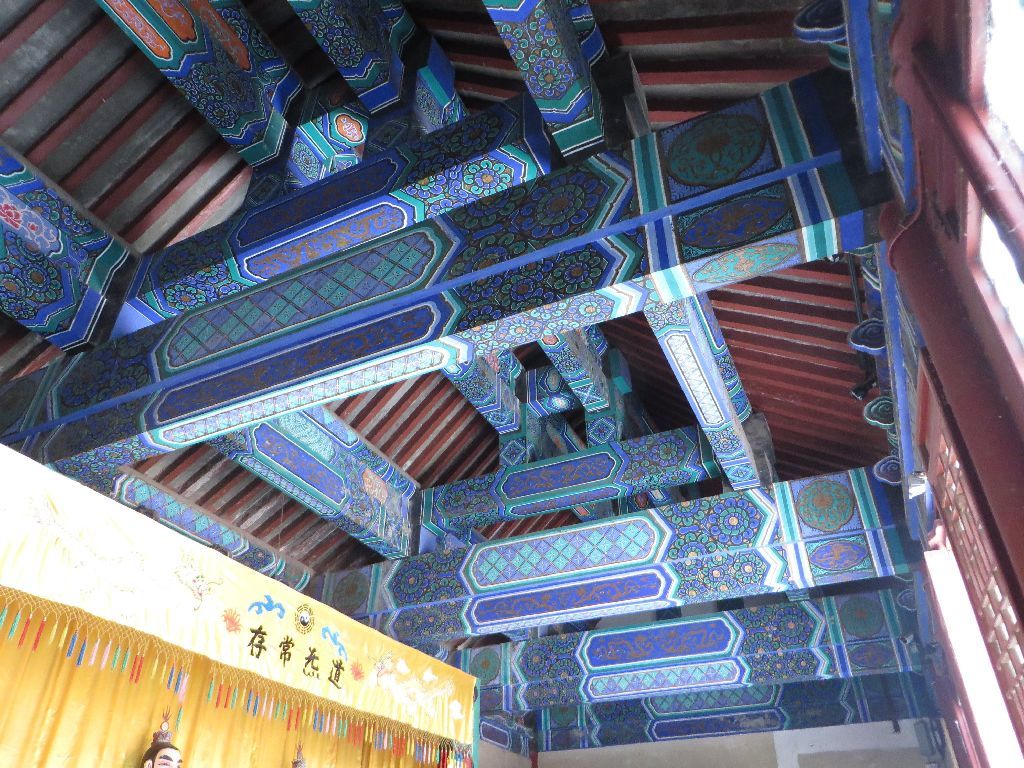
… the visitor discovers a majestic vista,
but this temple is much larger that what you see here, because there are several successive buildings in this alignment
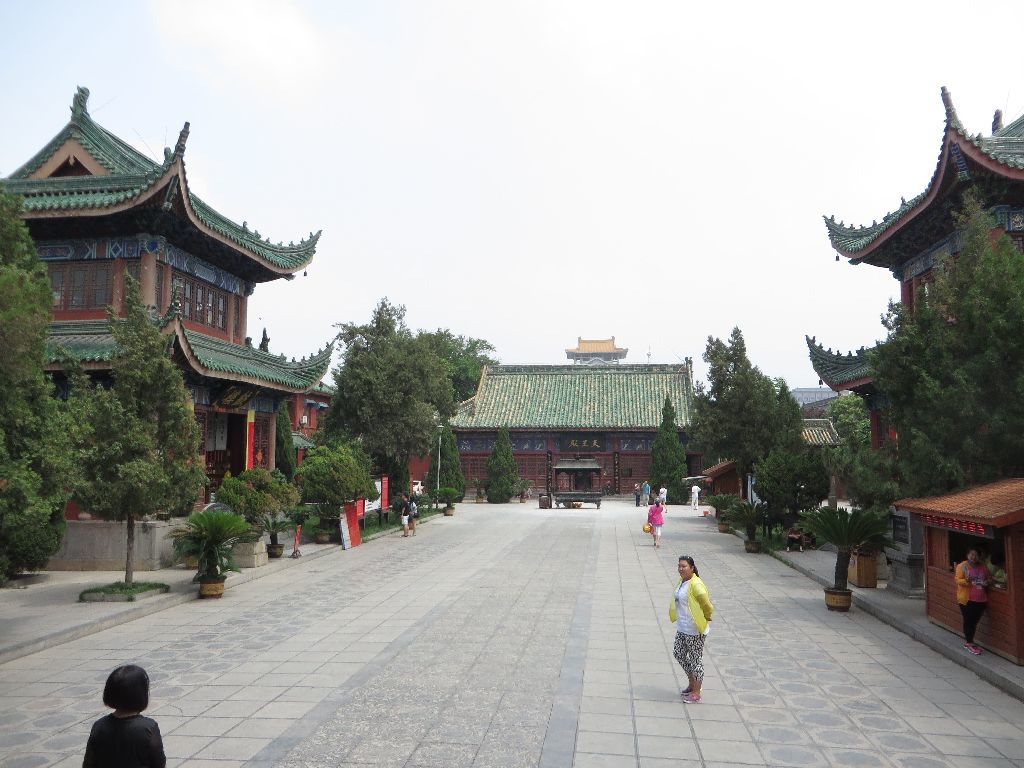
The small pool is crossed by a bridge
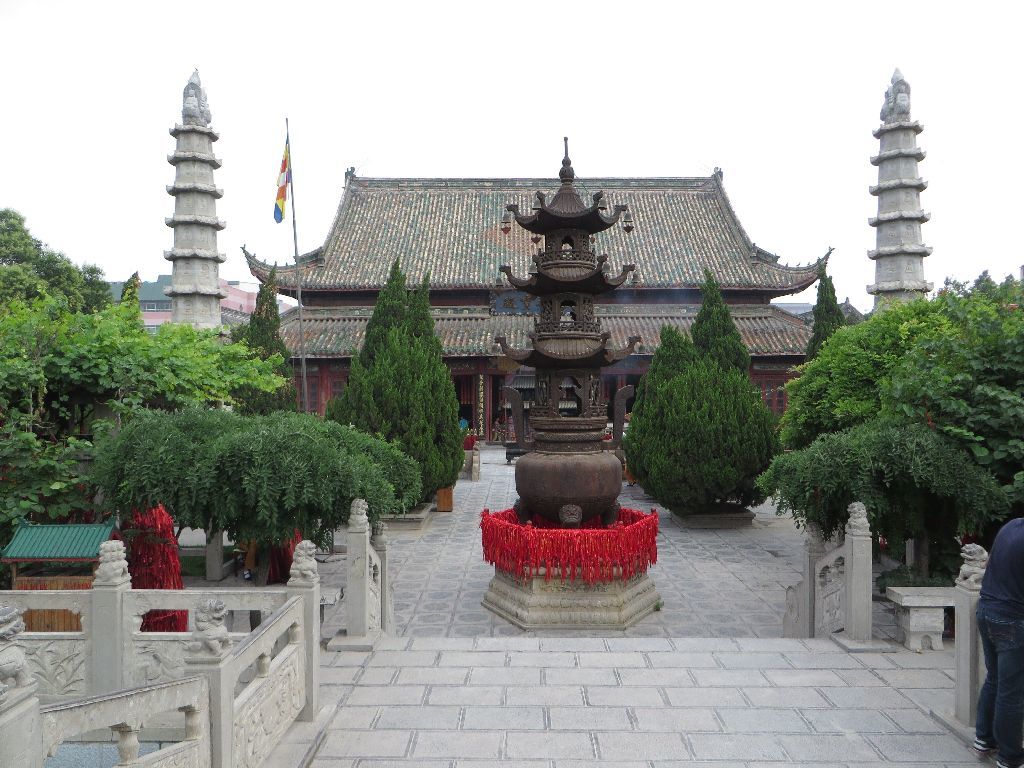
The pool is decorated on each side by sculptures
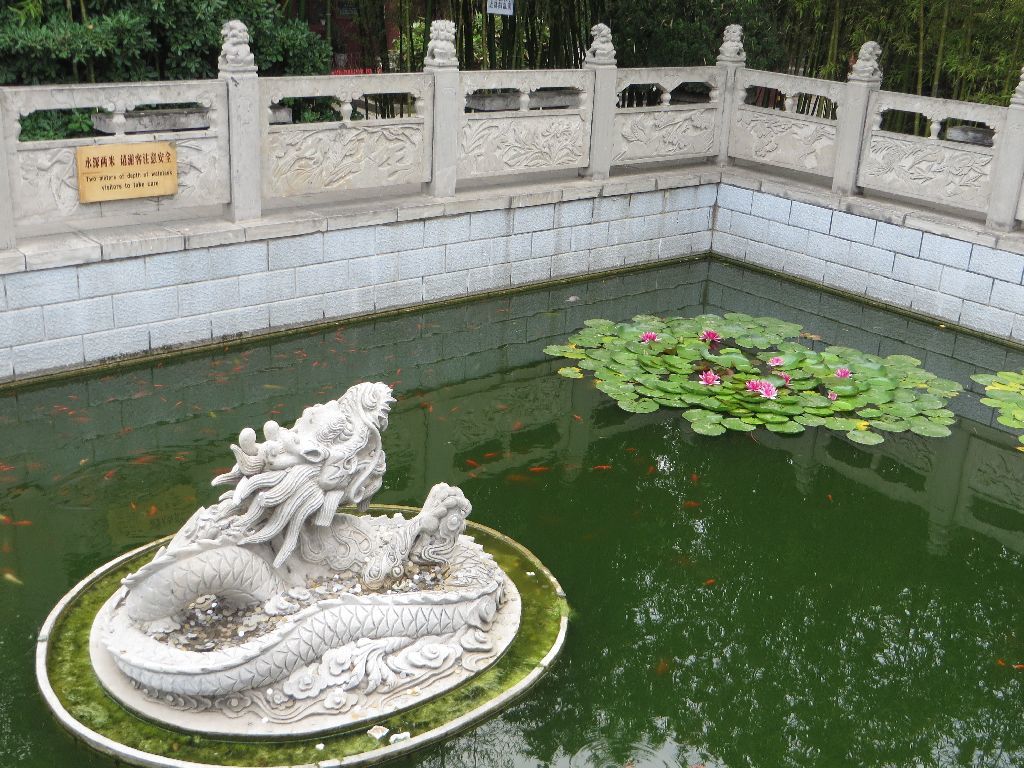
Kaifeng is a place where you can find surviving traces of chinglish, this inimitable jumble of would-be translations from Chinese to English.

There too, you can buy a ten yuan red lucky ribbon and personalize it

There were ten different models, calling for happiness in the family, success in studies or at work, the birth of a healthy child, etc.. My estimate was that there were over ten thousands of them under this pergola!

Whom do visitors pray there ? Buddha, or more accurately the three Buddha of past, present and future, from left to right.
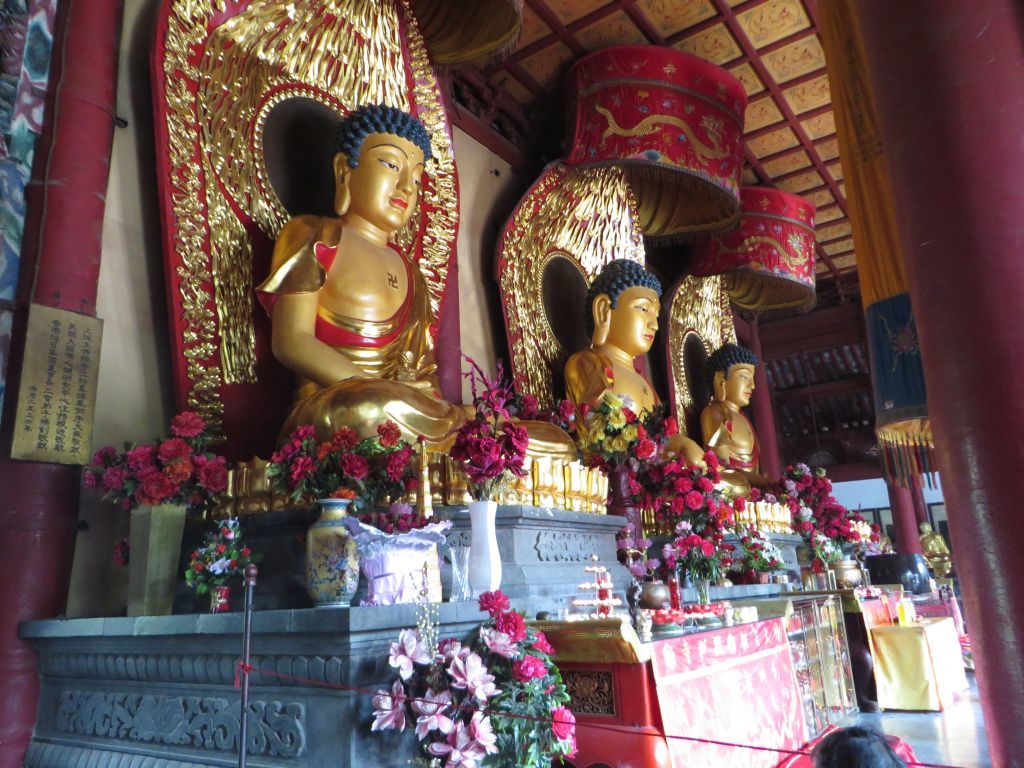
On the other side, there is as often a majestic statue of Guanyin, the bodhisattva of mercy

The treasure of this temple and of Kaifeng is in this octagonal pavilion, at the far end of the temple.
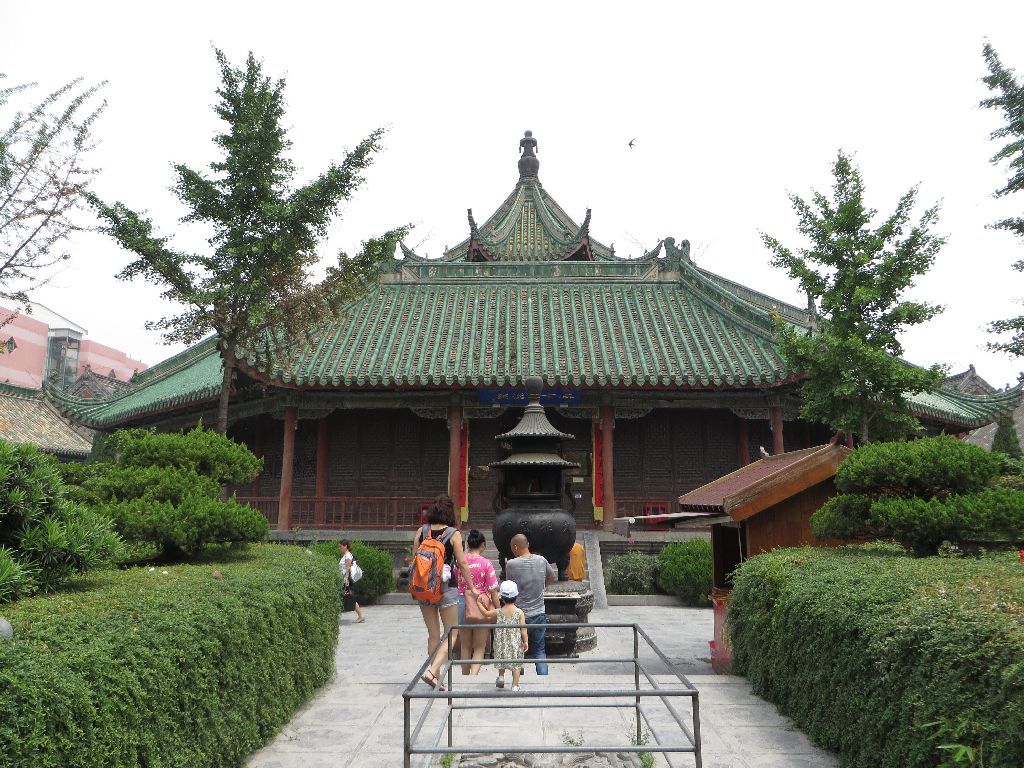
Carving this exceptional wooden statue of Thousand Arms Guanyin took 58 years of work.
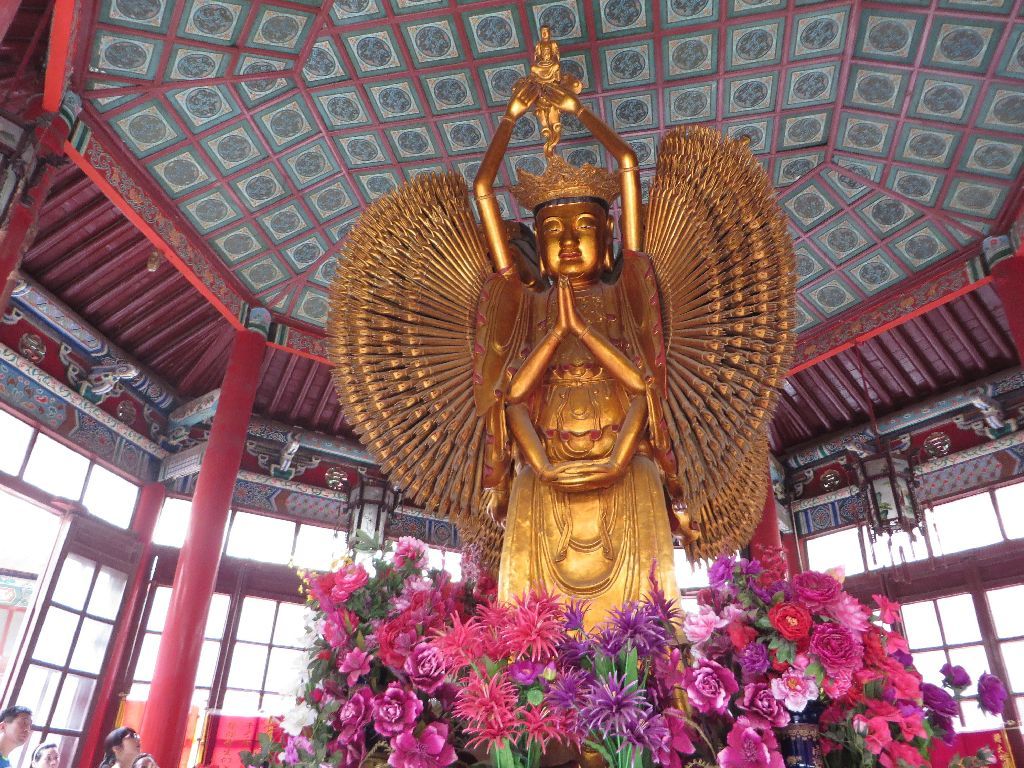
Representations of Thousand Arms Guanyin usually have only forty of them (each of them being capable of seeing and rescuing twenty-five distresses), but here, there are really 1,048 arms with an eye each. In order to reach this total, the statue has two symmetrical faces.
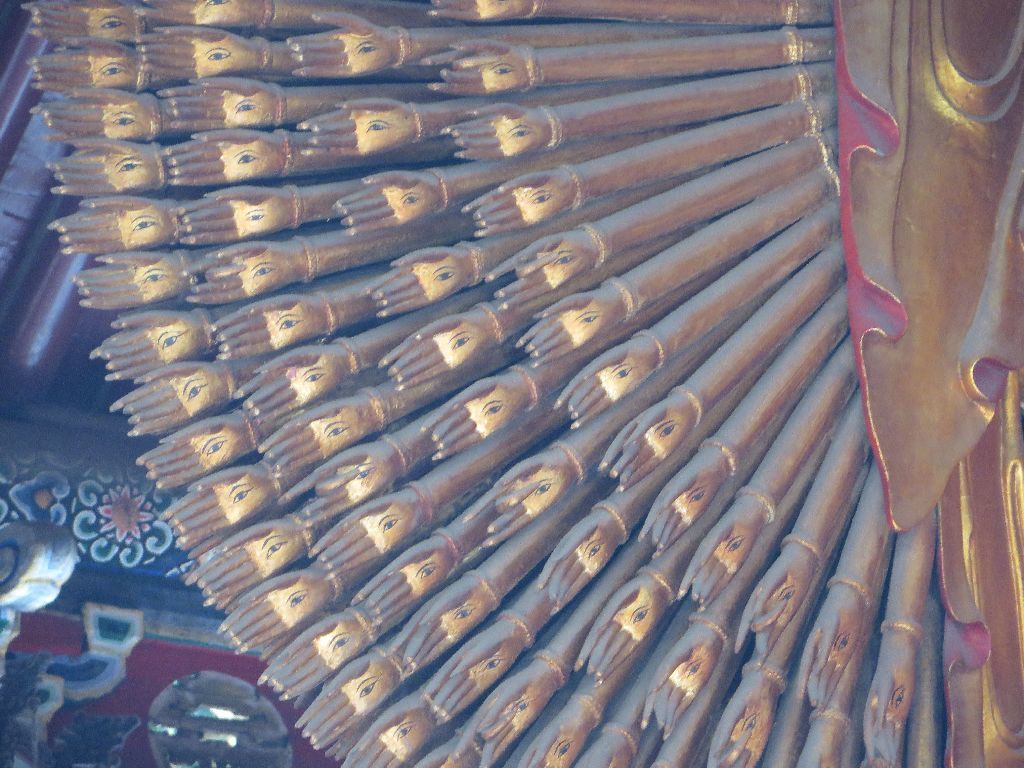
Was Guanyin merciful to us ? You will read it all in the report of the ensuing flight here.

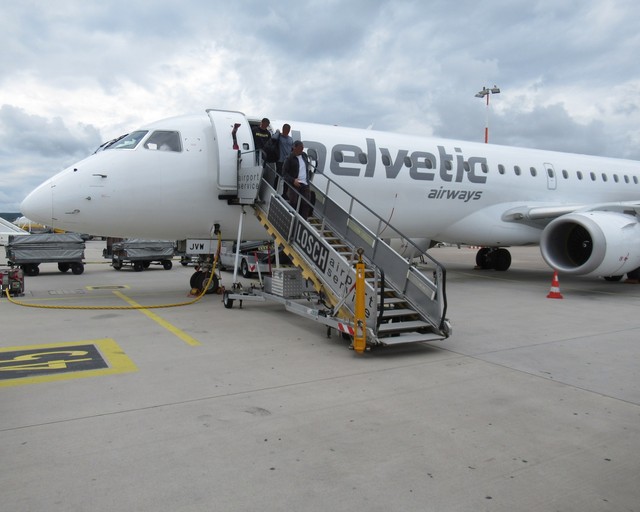

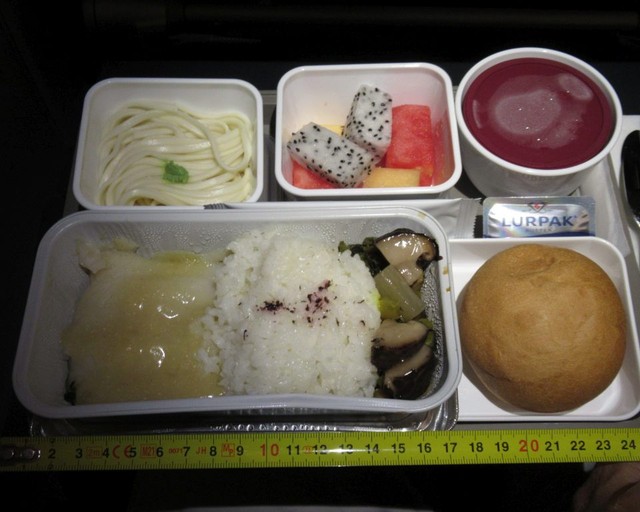

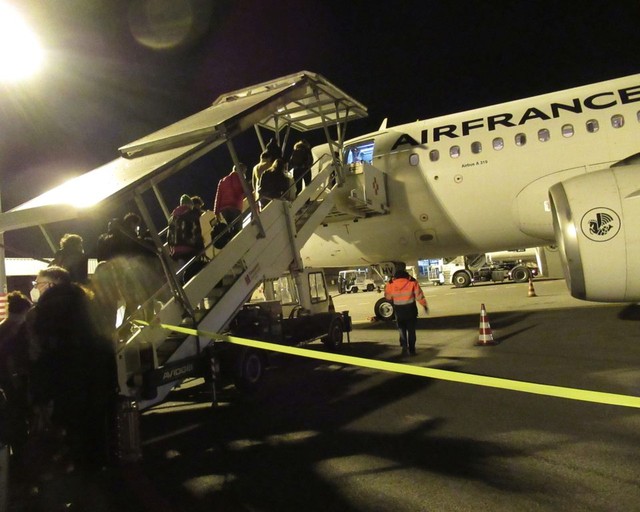

Thank you for sharing this report aboard FM Marathon!
One peculiarity of Shanghai’s two airports is that there is an explosive detection test to enter the terminals
- Both times I have been through PVG, I've never had this test done.
It takes no fewer than six screens to display all the domestic flights leaving from this terminal
- And those are just for domestic departures^^
smeared with red ink
- blue?
which makes it difficult to take pictures of the planes parked at the gates.
- You get better shots on the lounge level which is down the stairs. I've never had an agent check to see if I had lounge access before walking down there so you should be able to get away with it as long as you act like you know what you are doing.
A detail of the carpeting. It was clean, in a location where small debris tend to accumulate.
- A classic Marathon check and one that I have also adopted as a result^^
(What is the correct name in English for that ?)
- downlock pin
It appeared to be a scarecrow
- On my first trip to PVG, these also caught my eye immediately. A very distinctive addition to PVG^^ In the US, they might encourage some target practice ;)
which I hoped to be water from the sinks.
- Reminds me of ATH that posts signs in the restroom reminding people to improve their accuracy ;)
Thank you for the beautiful bonus of Kaifeng and its temple. The Thousand Arms Guanyin looks worth the trip.
One peculiarity of Shanghai’s two airports is that there is an explosive detection test to enter the terminals.
Both times I have been through PVG, I've never had this test done.”
- VIP protection measures when I am scheduled to fly out of them ? ^^
It takes no fewer than six screens to display all the domestic flights leaving from this terminal
And those are just for domestic departures^^
- That is where the information that there over 200 cities above the million inhabitants mark sinks in.
smeared with red ink. Blue?”
- Should I claim color blindness ? I correct the error”
which makes it difficult to take pictures of the planes parked at the gates.
You get better shots on the lounge level which is down the stairs. I've never had an agent check to see if I had lounge access before walking down there so you should be able to get away with it as long as you act like you know what you are doing.
- I take good note of that spotting location for next time. I often acted in China like I knew what I was doing, including in places where I did not really belong.^^
A detail of the carpeting. It was clean, in a location where small debris tend to accumulate.
A classic Marathon check and one that I have also adopted as a result”
- The “Horatius test” (checking the bottom of the magazine pocket) is also a good quality check in this regard.
Downlock pin : Thanks for teaching me the name.
It appeared to be a scarecrow.
On my first trip to PVG, these also caught my eye immediately. A very distinctive addition to PVG^^ In the US, they might encourage some target practice ;)”
- Do they shoot at white silhouettes too ?
which I hoped to be water from the sinks.
Reminds me of ATH that posts signs in the restroom reminding people to improve their accuracy ;)”
- I’ve seen similar signs in China, but not in airports, and sometimes with interesting Chinglish.
“Thank you for the beautiful bonus of Kaifeng and its temple. The Thousand Arms Guanyin looks worth the trip.”
- Kaifeng is inconvenient to reach, which was the reason I had never been there before. But that statue was indeed amazing.
Thanks for your comments !
Do they shoot at white silhouettes too ?
- Some Americans will shoot at anything ;)
That is where the information that there over 200 cities above the million inhabitants mark sinks in.
- Many US airports have similar types of domestic FIDS, but we can never grasp the sheer magnitude of China's population.
Wars, floods, neglect, internal turmoil... there has been many causes for the loss of many historic buildings in China. The origin of this Jewish community in Kaifeng is apparently lost in history, and persecutions do not seem to have been involved in its disappearance.
Shanghai Airlines is typical of an airline created by a local government, and later taken over by a major airline, keeping its commercial identity possibly for local political reasons.
Many thanks you for the interesting details on PVG - I add them in the text of my report, with due reference to you.
As of today, the Google Earth picture is dated Nov 2015, so nothing of the new satellite's construction appears in it.
Thanks for stopping by and for your comments!